
List of birds of Pennsylvania
Encyclopedia
A comprehensive listing of all the bird
species seen naturally in the U.S. state of Pennsylvania
is published by the Pennsylvania Ornithological Records Committee (PORC), part of the Pennsylvania Society for Ornithology.
There are currently 401 species on the list, as well as four species classified as 'extirpated
' —species that are native to Pennsylvania but no longer have established populations there (they still do in other places). Species which have been recorded in three or fewer of the past ten years are classified as 'accidental' (A), and species which have been recorded in four to seven of the last ten years are classified as 'casual' (C). In addition, there are two species which are now extinct
. When extirpated and extinct species are included, there are a total of 407 species. There are also eight species on a 'provisional list', which have been sighted but have no physical evidence to back up these claims.
The birds are determined by the Pennsylvania Society for Ornithology, which was established in 1990 and which published the first edition of the list in the same year. A second edition was published in 1995 and a third in 2000. This list reflects any changes made to the third edition after it was published.
This list is presented in taxonomic order
and follows The Check-list of North American Birds (7th ed., 1998), published by the American Ornithologists' Union
, and generally recognized as the scientific authority on the taxonomy and nomenclature of North American birds. The table of contents is grouped into passerine
s (the largest order
of birds) and non-passerines. The family
accounts at the beginning of each heading reflect this taxonomy, as do the species counts found in each family accounts.
There are 131 species worldwide, 61 North American species, and 42 Pennsylvania species.
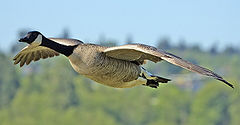
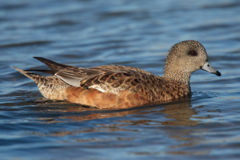
There are 180 species worldwide, 16 North American species, and four Pennsylvanian species.
There are five species worldwide, five North American species, and three Pennsylvanian species.
There are 20 species worldwide, seven North American species, and four Pennsylvanian species.
There are 75 species worldwide, 24 North American species, and three Pennsylvania species.
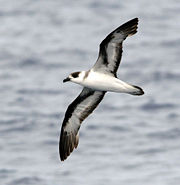
There are 21 species worldwide, 12 North American species, and two Pennsylvanian species.
There are three species worldwide, three North American species, and one Pennsylvanian species.
There are eight species worldwide, five North American species, and one Pennsylvanian species.

There are eight species worldwide, two North American species, and two Pennsylvanian species.
There are 36 species worldwide, six North American species, and two Pennsylvanian species.
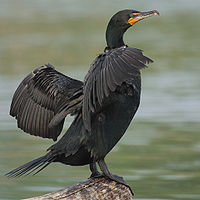
There are four species worldwide, one North American species, and one Pennsylvanian species.
There are five species worldwide, three North American species, and one Pennsylvanian species.
There are 61 species worldwide, 17 North American species, and 11 Pennsylvanian species.
There are 36 species worldwide, five North American species, and three Pennsylvanian species.
There are 19 species worldwide, two North American species, and one Pennsylvanian species.

There are seven species worldwide, three North American species, and two Pennsylvanian species.
There are 233 species worldwide, 28 North American species, and 14 Pennsylvanian species.
There are 62 species worldwide, 11 North American species, and four Pennsylvanian species.
There are 143 species worldwide, 13 North American species, and ten Pennsylvanian species.
.jpg)
There are 15 species worldwide, three North American species, and one Pennsylvanian species.
There are 66 species worldwide, 17 North American species, and seven Pennsylvanian species.
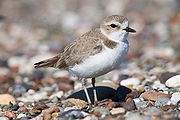
There are 11 species worldwide, two North American species, and one Pennsylvanian species.
There are nine species worldwide, three North American species, and two Pennsylvanian species.
There are 86 species worldwide, 65 North American species, and 32 Pennsylvanian species.
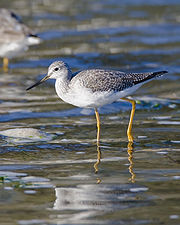
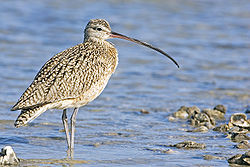
There are 108 species worldwide, 54 North American species, and 31 Pennsylvanian species.

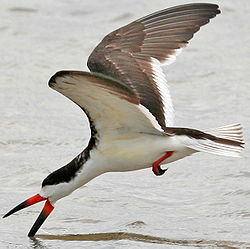
There are 24 species worldwide, 22 North American species, and four Pennsylvanian species.
There are 308 species worldwide, 18 North American species, and five Pennsylvanian species.
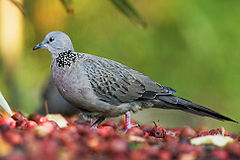
There are 138 species worldwide, eight North American species, and two Pennsylvanian species.
There are 16 species worldwide, one North American species, and one Pennsylvanian species.
There are 195 species worldwide, 21 North American species, and ten Pennsylvania species.
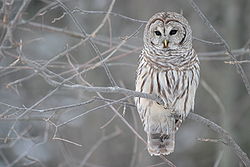
There are 86 species worldwide, nine North American species, and three Pennsylvanian species.
There are 98 species worldwide, nine North American species, and one Pennsylvanian species.
There are 337 species worldwide, 23 North American species, and three Pennsylvanian species.
.jpg)
There are 94 species worldwide, three North American species, and one Pennsylvanian species.
There are 218 species worldwide, 26 North American species, and 8 Pennsylvanian species.
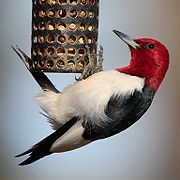
There are 429 species worldwide, 45 North American species, and 19 Pennsylvanian species.
There are 31 species worldwide, three North American species, and two Pennsylvanian species.
There are 52 species worldwide, 16 North American species, and six Pennsylvanian species.
There are 120 species worldwide, 21 North American species, and four Pennsylvanian species.

There are 91 species worldwide, two North American species, and one Pennsylvanian species.
There are 75 species worldwide, 14 North American species, and seven Pennsylvanian species.
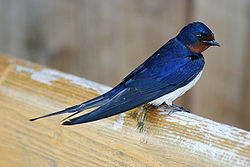
There are species 59 worldwide, 12 North American species, and four Pennsylvanian species.
There are 24 species worldwide, four North American species, and two Pennsylvanian species.
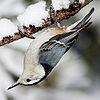
There are six species worldwide, one North American species, and one Pennsylvanian species.
There are 79 species worldwide and nine North American species, and six Pennsylvanian species.
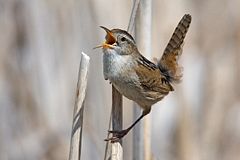
There are five species worldwide, two North American species, and two Pennsylvanian species.
There are about 300 species worldwide, 12 North American Species, and one Pennsylvanian species.
There are 335 species worldwide, 28 North American species, and 13 Pennsylvanian species.
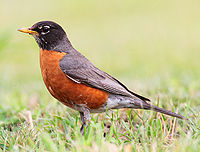
There are 35 species worldwide, 13 North American species, and three Pennsylvanian species.
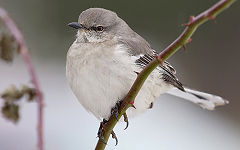
There are 125 species worldwide, of which one has been introduced to North America and Pennsylvania.
There are 54 species worldwide, 11 North American species, and one Pennsylvanian species.
There are three species worldwide, two North American species, and two Pennsylvanian species.
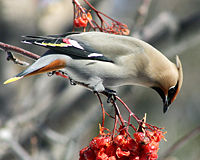
There are 119 species worldwide, 57 North American species, and 41 Pennsylvanian species.

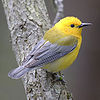
There are 256 species worldwide, six North American species, and three Pennsylvanian species.
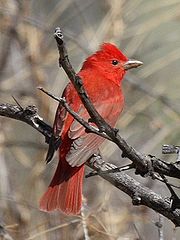
There are species 275 worldwide, 60 North American species, and 27 Pennsylvanian species.
There are 43 species worldwide, 13 North American species, and ten Pennsylvanian species.
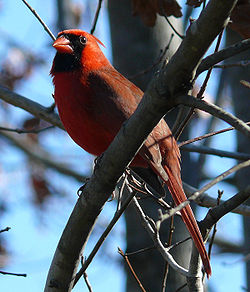
There are 98 species worldwide, 25 North American Species, and 12 Pennsylvanian species.
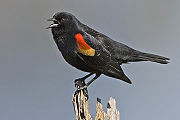
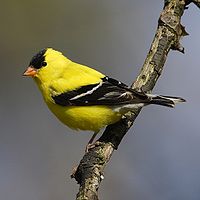
There are 35 species worldwide, two North American species, and one Pennsylvanian species.
Two birds are now extinct:
) which have been sighted but do not have documentation by a specimen, photograph, or recording.
Bird
Birds are feathered, winged, bipedal, endothermic , egg-laying, vertebrate animals. Around 10,000 living species and 188 families makes them the most speciose class of tetrapod vertebrates. They inhabit ecosystems across the globe, from the Arctic to the Antarctic. Extant birds range in size from...
species seen naturally in the U.S. state of Pennsylvania
Pennsylvania
The Commonwealth of Pennsylvania is a U.S. state that is located in the Northeastern and Mid-Atlantic regions of the United States. The state borders Delaware and Maryland to the south, West Virginia to the southwest, Ohio to the west, New York and Ontario, Canada, to the north, and New Jersey to...
is published by the Pennsylvania Ornithological Records Committee (PORC), part of the Pennsylvania Society for Ornithology.
There are currently 401 species on the list, as well as four species classified as 'extirpated
Local extinction
Local extinction, also known as extirpation, is the condition of a species which ceases to exist in the chosen geographic area of study, though it still exists elsewhere...
' —species that are native to Pennsylvania but no longer have established populations there (they still do in other places). Species which have been recorded in three or fewer of the past ten years are classified as 'accidental' (A), and species which have been recorded in four to seven of the last ten years are classified as 'casual' (C). In addition, there are two species which are now extinct
Extinction
In biology and ecology, extinction is the end of an organism or of a group of organisms , normally a species. The moment of extinction is generally considered to be the death of the last individual of the species, although the capacity to breed and recover may have been lost before this point...
. When extirpated and extinct species are included, there are a total of 407 species. There are also eight species on a 'provisional list', which have been sighted but have no physical evidence to back up these claims.
The birds are determined by the Pennsylvania Society for Ornithology, which was established in 1990 and which published the first edition of the list in the same year. A second edition was published in 1995 and a third in 2000. This list reflects any changes made to the third edition after it was published.
This list is presented in taxonomic order
Taxonomic order
Taxonomic sequence is a sequence followed in listing of taxa which aids ease of use and roughly reflects the evolutionary relationships among the taxa...
and follows The Check-list of North American Birds (7th ed., 1998), published by the American Ornithologists' Union
American Ornithologists' Union
The American Ornithologists' Union is an ornithological organization in the USA. Unlike the National Audubon Society, its members are primarily professional ornithologists rather than amateur birders...
, and generally recognized as the scientific authority on the taxonomy and nomenclature of North American birds. The table of contents is grouped into passerine
Passerine
A passerine is a bird of the order Passeriformes, which includes more than half of all bird species. Sometimes known as perching birds or, less accurately, as songbirds, the passerines form one of the most diverse terrestrial vertebrate orders: with over 5,000 identified species, it has roughly...
s (the largest order
Order (biology)
In scientific classification used in biology, the order is# a taxonomic rank used in the classification of organisms. Other well-known ranks are life, domain, kingdom, phylum, class, family, genus, and species, with order fitting in between class and family...
of birds) and non-passerines. The family
Family (biology)
In biological classification, family is* a taxonomic rank. Other well-known ranks are life, domain, kingdom, phylum, class, order, genus, and species, with family fitting between order and genus. As for the other well-known ranks, there is the option of an immediately lower rank, indicated by the...
accounts at the beginning of each heading reflect this taxonomy, as do the species counts found in each family accounts.
| Table of contents |
|---|
Non-passerines: Ducks, Geese, and Swans • Partridges, Grouse, Turkeys, and Old World Quail • Loons • Grebes • Shearwaters and Petrels • Storm-Petrels • Tropicbirds • Boobies and Gannets • Pelicans • Cormorants • Darters • Frigatebirds • Bitterns, Herons, and Egrets • Ibises and Spoonbills • Storks • New World Vultures • Hawks, Kites, and Eagles • Caracaras and Falcons • Rails, Gallinules, and Coots • Cranes • Lapwings and Plovers • Oystercatchers • Stilts and Avocets • Sandpipers, Curlews, Stints, Godwits, Snipes, and Phalaropes • Skuas, Gulls, Terns, and Skimmers • Auks, Murres, and Puffins • Pigeons and Doves • Cuckoos, Roadrunners, and Anis • Barn owls • Typical owls • Nightjars • Swifts • Hummingbirds • Kingfishers • Woodpeckers, Sapsuckers, and Flickers |
Passerines: Tyrant flycatchers • Shrikes • Vireos • Jays, Crows, Magpies, and Ravens • Larks • Swallows and Martins • Chickadees and Titmice • Nuthatches • Treecreepers • Wrens • Kinglets • Old World warblers and Gnatcatchers • Thrushes • Mockingbirds and Thrashers • Starlings • Wagtails and Pipits • Waxwings • Wood-warblers • Tanagers • American sparrows, Towhees, Juncos, and Longspurs • Cardinals, Saltators, and Grosbeaks • Blackbirds, Meadowlarks, Cowbirds, Grackles, and Orioles • Finches • Old World sparrows |
Extirpated and extinct Provisional See also References |
There are 131 species worldwide, 61 North American species, and 42 Pennsylvania species.


- Black-bellied Whistling-DuckBlack-bellied Whistling DuckThe Black-bellied Whistling Duck , formerly also called Black-bellied Tree Duck, is a whistling duck that breeds from the southernmost United States and tropical Central to south-central South America. In the USA, it can be found year-round in parts of southeast Texas, and seasonally in southeast...
, Anser brachyrhynchus (A) - Pink-footed GoosePink-footed GooseThe Pink-footed Goose is a goose which breeds in eastern Greenland, Iceland and Svalbard. It is migratory, wintering in northwest Europe, especially Great Britain, the Netherlands, and western Denmark...
, Dendrocygna autumnalis (C) - Greater White-fronted GooseWhite-fronted GooseThe Greater White-fronted Goose is a species of goose. The Greater White-fronted Goose is more closely related to the smaller Lesser White-fronted Goose...
, Anser albifrons - Snow GooseSnow GooseThe Snow Goose , also known as the Blue Goose, is a North American species of goose. Its name derives from the typically white plumage. The genus of this bird is disputed...
, Chen caerulescens - Ross's GooseRoss's GooseThe Ross's Goose is a North American species of goose.The American Ornithologists' Union places this species and the other two "white" geese in the genus Chen rather than the more traditional "grey" goose genus Anser.This goose breeds in northern Canada, mainly in the Queen Maud Gulf Migratory...
, Chen rossii - Cackling GooseCanada GooseThe Canada Goose is a wild goose belonging to the genus Branta, which is native to arctic and temperate regions of North America, having a black head and neck, white patches on the face, and a brownish-gray body....
, Branta hutchinsii - Canada GooseCanada GooseThe Canada Goose is a wild goose belonging to the genus Branta, which is native to arctic and temperate regions of North America, having a black head and neck, white patches on the face, and a brownish-gray body....
, Branta canadensis - BrantBrent GooseThe Brant or Brent Goose, Branta bernicla, is a species of goose of the genus Branta. The Black Brant is an American subspecies. The specific descriptor bernicla is from the same source as "barnacle" in Barnacle Goose, which looks similar but is not a close relation.-Appearance:The Brant Goose is...
, Branta bernicla - Mute SwanMute SwanThe Mute Swan is a species of swan, and thus a member of the duck, goose and swan family Anatidae. It is native to much of Europe and Asia, and the far north of Africa. It is also an introduced species in North America, Australasia and southern Africa. The name 'mute' derives from it being less...
, Cygnus olor - Tundra Swan, Cygnus columbianus
- Wood DuckWood DuckThe Wood Duck or Carolina Duck is a species of duck found in North America. It is one of the most colourful of North American waterfowl.-Description:...
, Aix sponsa - GadwallGadwallThe Gadwall is a common and widespread duck of the family Anatidae.- Description :The Gadwall is 46–56 cm long with a 78–90 cm wingspan. The male is slightly larger than the female, weighing on average 990 g against her 850 g...
, Anas strepera - Eurasian Wigeon, Anas penelope
- American WigeonAmerican WigeonThe American Wigeon, also American Widgeon or Baldpate, is a species of wigeon in the dabbling duck genus Anas. If this is split up, all wigeons will go into their old genus Mareca again...
, Anas americana - American Black DuckAmerican Black DuckThe American Black Duck is a large dabbling duck. American Black Ducks are similar to Mallards in size, and resemble the female Mallard in coloration, although the Black Duck's plumage is darker...
, Anas rubripes - MallardMallardThe Mallard , or Wild Duck , is a dabbling duck which breeds throughout the temperate and subtropical Americas, Europe, Asia, and North Africa, and has been introduced to New Zealand and Australia....
, Anas platyrhynchos - Blue-winged TealBlue-winged TealThe Blue-winged Teal is a small dabbling duck from North America.-Description:The Blue-winged Teal is long, with a wingspan of , and a weight of . The adult male has a greyish blue head with a white facial crescent, a light brown body with a white patch near the rear and a black tail. The adult...
, Anas discors - Cinnamon TealCinnamon TealThe Cinnamon Teal is a small, reddish dabbling duck found in marshes and ponds of western North and South America.thumb|left|Female Anas cyanoptera septentrionalium...
, Anas cyanoptera (A) - Northern ShovelerNorthern ShovelerThe Northern Shoveler , Northern Shoveller in British English, sometimes known simply as the Shoveler, is a common and widespread duck. It breeds in northern areas of Europe and Asia and across most of North America, and is a rare vagrant to Australia...
, Anas clypeata - Northern PintailNorthern PintailThe Pintail or Northern Pintail is a widely occurring duck which breeds in the northern areas of Europe, Asia and North America. It is strongly migratory and winters south of its breeding range to the equator...
, Anas acuta - Green-winged TealGreen-winged TealThe Green-winged Teal is a common and widespread duck that breeds in the northern areas of North America except on the Aleutian Islands. It was considered conspecific with the Common Teal The Green-winged Teal (Anas carolinensis) is a common and widespread duck that breeds in the northern areas of...
, Anas crecca - CanvasbackCanvasbackThe Canvasback is the largest of the North American diving ducks, that ranges from between long and weighs approximately , with a wingspan of . The canvasback has a distinctive wedge-shaped head and long graceful neck. The adult male has a black bill, a chestnut red head and neck, a black...
, Aythya valisineria - RedheadRedhead (duck)The Redhead is a medium-sized diving duck, 37 cm long with an 84 cm wingspan.The adult male has a blue bill, a red head and neck, a black breast, yellow eyes and a grey back. The adult female has a brown head and body and a darker bluish bill with a black tip.The breeding habitat is...
, Aythya americana - Common Pochard, Aythya ferina
- Ring-necked DuckRing-necked DuckThe Ring-necked Duck is a smaller diving duck from North America.The adult male is similar in color pattern to the Eurasian Tufted Duck, its relative. It has a grey bill with a white band, a shiny purple head, a white breast, yellow eyes and a dark grey back...
, Aythya collaris - Tufted DuckTufted DuckThe Tufted Duck, Aythya fuligula, is a medium-sized diving duck with a population of close to one million birds.- Description :The adult male is all black except for white flanks and a blue-grey bill. It has an obvious head tuft that gives the species its name.The adult female is brown with paler...
, Aythya fuligula (A) - Greater ScaupGreater ScaupThe Greater Scaup , just Scaup in Europe, or colloquially known as "Bluebill", for its bright blue bill, is small compared to other diving ducks, however it is larger than the closely related Lesser Scaup...
, Aythya marila - Lesser ScaupLesser ScaupThe Lesser Scaup is a small North American diving duck that migrates south as far as Central America in winter. It is colloquially known as the Little Bluebill or Broadbill because of its distinctive blue bill...
, Aythya affinis - King EiderKing EiderThe King Eider is a large sea duck that breeds along northern hemisphere Arctic coasts of northeast Europe, North America and Asia. The birds spend most of the year in coastal marine ecosystems at high latitudes, and migrate to Arctic tundra to breed in June and July...
, Somateria spectabilis (A) - Harlequin DuckHarlequin DuckThe Harlequin Duck is a small sea duck. It takes its name from Arlecchino, Harlequin in French, a colourfully dressed character in Commedia dell'arte. The species name comes from the Latin word "histrio", "actor". In North America it is also known as Lords and ladies...
, Histrionicus histrionicus (A) - Surf ScoterSurf ScoterThe Surf Scoter is a large sea duck, which breeds in Canada and Alaska. It is placed in the subgenus Melanitta, along with the Velvet and White-winged Scoters, distinct from the subgenus Oidemia, Black and Common Scoters.It winters further south in temperate zones, on the coasts of the northern USA...
, Melanitta perspicillata - White-winged ScoterWhite-winged ScoterThe White-winged Scoter is a large sea duck.-Description:It is characterised by its bulky shape and large bill. This is the largest species of scoter. Females range from 950-1950 grams and 48–56 cm , averaging 1180 grams and 52.3 cm . She is brown with pale head patches...
, Melanitta fusca - Black ScoterBlack ScoterThe Black or American Scoter is a large sea duck, 43 to 49 centimeters in length. Together with the Common Scoter M. nigra, it forms the subgenus Oidemia; the two are sometimes considered conspecific, the Black Scoter then being referred to as M. nigra americana...
, Melanitta nigra - Long-tailed DuckLong-tailed DuckThe Long-tailed Duck or Oldsquaw is a medium-sized sea duck. It is the only living member of its genus, Clangula; this was formerly used for the goldeneyes, with the Long-tailed Duck being placed in Harelda...
, Clangula hyemalis - BuffleheadBuffleheadThe Bufflehead is a small American sea duck of the genus Bucephala, the goldeneyes. This species was first described by Linnaeus in his Systema naturae in 1758 as Anas albeola.-Description:...
, Bucephala albeola - Common GoldeneyeCommon GoldeneyeThe Common Goldeneye is a medium-sized sea duck of the genus Bucephala, the goldeneyes. Their closest relative is the similar Barrow's Goldeneye....
, Bucephala clangula - Barrow's GoldeneyeBarrow's GoldeneyeBarrow's Goldeneye is a medium-sized sea duck of the genus Bucephala, the goldeneyes. This bird was named after Sir John Barrow....
, Bucephala islandica (A) - Hooded MerganserHooded MerganserThe Hooded Merganser is a small duck and is the only member of the genus Lophodytes.Hooded Mergansers have a crest at the back of the head which can be expanded or contracted. In adult males, this crest has a large white patch, the head is black and the sides of the duck are reddish-brown...
, Lophodytes cucullatus - Common MerganserCommon MerganserThe Common Merganser or Goosander Mergus merganser is a large duck, of rivers and lakes of forested areas of Europe, northern and central Asia, and North America. It eats fish and nests in holes in trees...
, Mergus merganser - Red-breasted MerganserRed-breasted MerganserThe Red-breasted Merganser is a diving duck.-Taxonomy:The Red-breasted Merganser was one of the many species originally described by Linnaeus in his 18th-century work, Systema Naturae.-Description:...
, Mergus serrator - Masked DuckMasked DuckThe Masked Duck is a tiny stiff-tailed duck ranging through the tropical Americas. They are found from Mexico to South America and also in the Caribbean...
, Nomonyx dominicus (A) - Ruddy DuckRuddy DuckThe Ruddy Duck is a small stiff-tailed duck.Their breeding habitat is marshy lakes and ponds throughout much of North America, and in South America in the Andes. They nest in dense marsh vegetation near water. The female builds her nest out of grass, locating it in tall vegetation to hide it from...
, Oxyura jamaicensis
There are 180 species worldwide, 16 North American species, and four Pennsylvanian species.
- Northern Bobwhite, Colinus virginianus
- Ring-necked Pheasant, Phasianus colchicus
- Ruffed GrouseRuffed GrouseThe Ruffed Grouse is a medium-sized grouse occurring in forests from the Appalachian Mountains across Canada to Alaska. It is non-migratory.The Ruffed Grouse is frequently referred to as a "partridge"...
, Bonsa umbellus - Wild TurkeyWild TurkeyThe Wild Turkey is native to North America and is the heaviest member of the Galliformes. It is the same species as the domestic turkey, which derives from the South Mexican subspecies of wild turkey .Adult wild turkeys have long reddish-yellow to grayish-green...
, Meleagris gallopavo
There are five species worldwide, five North American species, and three Pennsylvanian species.
- Red-throated Loon, Gavia stellata
- Pacific Loon, Gavia pacifica (A)
- Common Loon, Gavia immer
There are 20 species worldwide, seven North American species, and four Pennsylvanian species.
- Pied-billed GrebePied-billed GrebeThe Pied-billed Grebe is a species of the grebe family of water birds. Since the Atitlán Grebe, Podilymbus gigas, has become extinct, it is the sole extant member of the genus Podilymbus.-Description:...
, Podilymbus podiceps - Horned Grebe, Podiceps auritus
- Red-necked GrebeRed-necked GrebeThe Red-necked Grebe is a migratory aquatic bird found in the temperate regions of the northern hemisphere. Its wintering habitat is largely restricted to calm waters just beyond the waves around ocean coasts, although some birds may winter on large lakes...
, Podiceps grisegena - Eared Grebe, Podiceps nigricollis
There are 75 species worldwide, 24 North American species, and three Pennsylvania species.

- Black-capped PetrelBlack-capped PetrelThe Black-capped Petrel is a small seabird in the gadfly petrel genus, Pterodroma. It is also known as the Diablotín. The extinct Jamaica Petrel was a related dark form, often considered a subspecies of this bird.This long-winged petrel has a grey-brown back and wings, with a white nape and rump...
, Pterodroma hasitata (A) - Cory’s Shearwater, Calonectris diomedea (A)
- Greater Shearwater, Puffinus gravis (A)
There are 21 species worldwide, 12 North American species, and two Pennsylvanian species.
- Leach's Storm-petrelLeach's Storm-petrelThe Leach's Storm Petrel or Leach's Petrel is a small seabird of the tubenose family. It is named after the British zoologist William Elford Leach....
, Oceanodroma leucorhoa (A) - Band-rumped Storm-petrel, Oceanodroma castro (A)
There are three species worldwide, three North American species, and one Pennsylvanian species.
- White-tailed TropicbirdWhite-tailed TropicbirdThe White-tailed Tropicbird Phaethon lepturus, is a tropicbird, smallest of three closely related seabirds of the tropical oceans and smallest member of the order Phaethontiformes. It occurs in the tropical Atlantic, western Pacific and Indian Oceans...
, Phaethon lepturus (A)
There are eight species worldwide, five North American species, and one Pennsylvanian species.

- Northern GannetNorthern GannetThe Northern Gannet is a seabird and is the largest member of the gannet family, Sulidae.- Description :Young birds are dark brown in their first year, and gradually acquire more white in subsequent seasons until they reach maturity after five years.Adults are long, weigh and have a wingspan...
, Morus bassanus (A)
There are eight species worldwide, two North American species, and two Pennsylvanian species.
- American White PelicanAmerican White PelicanThe American White Pelican is a large aquatic bird from the order Pelecaniformes. It breeds in interior North America, moving south and to the coasts, as far as Central America, in winter....
, Pelecanus erythrorhynchos - Brown PelicanBrown PelicanThe Brown Pelican is the smallest of the eight species of pelican, although it is a large bird in nearly every other regard. It is in length, weighs from and has a wingspan from .-Range and habits:...
, Pelecanus occidentalis (A)
There are 36 species worldwide, six North American species, and two Pennsylvanian species.

- Double-crested CormorantDouble-crested CormorantThe Double-crested Cormorant is a member of the cormorant family of seabirds. It occurs along inland waterways as well as in coastal areas, and is widely distributed across North America, from the Aleutian Islands in Alaska down to Florida and Mexico...
, Phalacrocorax auritus - Great CormorantGreat CormorantThe Great Cormorant , known as the Great Black Cormorant across the Northern Hemisphere, the Black Cormorant in Australia and the Black Shag further south in New Zealand, is a widespread member of the cormorant family of seabirds...
, Phalacrocorax carbo
There are four species worldwide, one North American species, and one Pennsylvanian species.
- AnhingaAnhingaThe Anhinga , sometimes called Snakebird, Darter, American Darter, or Water Turkey, is a water bird of the warmer parts of the Americas. The word "anhinga" comes from the Brazilian Tupi language and means devil bird or snake bird.It is a cormorant-like bird with an average body length of , a...
, Anhinga anhinga
There are five species worldwide, three North American species, and one Pennsylvanian species.
- Magnificent FrigatebirdMagnificent FrigatebirdThe Magnificent Frigatebird was sometimes previously known as Man O'War, reflecting its rakish lines, speed, and aerial piracy of other birds....
, Fregata magnificens (A)
There are 61 species worldwide, 17 North American species, and 11 Pennsylvanian species.
- American BitternAmerican BitternThe American Bittern is a wading bird of the heron family Ardeidae. New evidence has led the American Ornithologists' Union to move the heron family into the order Pelecaniformes .-Description:...
, Botaurus lentiginosus - Least BitternLeast BitternThe Least Bittern is a small wading bird, the smallest heron found in the Americas.This bird's underparts and throat are white with light brown streaks. Their face and the sides of the neck are light brown; they have yellow eyes and a yellow bill. The adult male is glossy greenish black on the...
, Ixobrychus exilis - Great Blue HeronGreat Blue HeronThe Great Blue Heron is a large wading bird in the heron family Ardeidae, common near the shores of open water and in wetlands over most of North and Central America as well as the West Indies and the Galápagos Islands. It is a rare vagrant to Europe, with records from Spain, the Azores and England...
, Ardea herodias - Great EgretGreat EgretThe Great Egret , also known as the Great White Egret or Common Egret, White Heron, or Great White Heron, is a large, widely-distributed egret. Distributed across most of the tropical and warmer temperate regions of the world, in southern Europe it is rather localized...
, Ardea alba - Snowy EgretSnowy EgretThe Snowy Egret is a small white heron. It is the American counterpart to the very similar Old World Little Egret, which has established a foothold in the Bahamas....
, Egretta thula - Little Blue HeronLittle Blue HeronThe Little Blue Heron, Egretta caerulea, is a small heron. It breeds from the Gulf states of the USA through Central America and the Caribbean south to Peru and Uruguay. It is a resident breeder in most of its range, but some northern breeders migrate to the southeastern USA or beyond in winter...
, Egretta caerulea - Tricolored HeronTricolored HeronThe Tricolored Heron formerly known in North America as the Louisiana Heron, is a small heron. It is a resident breeder from the Gulf states of the USA and northern Mexico south through Central America and the Caribbean to central Brazil and Peru...
, Egretta tricolor - Cattle EgretCattle EgretThe Cattle Egret is a cosmopolitan species of heron found in the tropics, subtropics and warm temperate zones. It is the only member of the monotypic genus Bubulcus, although some authorities regard its two subspecies as full species, the Western Cattle Egret and the Eastern Cattle Egret...
, Bubulcus ibis - Green HeronGreen HeronThe Green Heron is a small heron of North and Central America. It was long considered conspecific with its sister species the Striated Heron , and together they were called "Green-backed Heron"...
, Butorides virescens - Black-crowned Night-HeronBlack-crowned Night HeronThe Black-crowned Night Heron commonly abbreviated to just Night Heron in Eurasia, is a medium-sized heron found throughout a large part of the world, except in the coldest regions and Australasia .-Description:Adults are...
, Nycticorax nycticorax - Yellow-crowned Night-HeronYellow-crowned Night HeronThe Yellow-crowned Night Heron , also called the American Night Heron or squawk, is a fairly small heron, similar in appearance to the Black-crowned Night Heron...
, Nyctanassa violacea
There are 36 species worldwide, five North American species, and three Pennsylvanian species.
- American White IbisAmerican White IbisThe American White Ibis is a species of wading bird in the ibis family Threskiornithidae. It occurs from the mid-Atlantic and Gulf coast of the United States south through most of the New World tropics...
, Eudocimus albus (C) - Glossy IbisGlossy IbisThe Glossy Ibis is a wading bird in the ibis family Threskiornithidae.This is the most widespread ibis species, breeding in scattered sites in warm regions of Europe, Asia, Africa, Australia, and the Atlantic and Caribbean region of the Americas...
, Plegadis falcinellus - Roseate SpoonbillRoseate SpoonbillThe Roseate Spoonbill, Platalea ajaja, is a gregarious wading bird of the ibis and spoonbill family, Threskiornithidae...
, Ajaia ajaja (A)
There are 19 species worldwide, two North American species, and one Pennsylvanian species.

- Wood StorkWood StorkThe Wood Stork is a large American wading bird in the stork family Ciconiidae. It was formerly called the "Wood Ibis", though it is not really an ibis.-Appearance:...
, Mycteria americana (C)
There are seven species worldwide, three North American species, and two Pennsylvanian species.
- Black VultureAmerican Black VultureThe Black Vulture also known as the American Black Vulture, is a bird in the New World vulture family whose range extends from the southeastern United States to Central Chile and Uruguay in South America...
, Coragyps atratus - Turkey VultureTurkey VultureThe Turkey Vulture is a bird found throughout most of the Americas. It is also known in some North American regions as the Turkey Buzzard , and in some areas of the Caribbean as the John Crow or Carrion Crow...
, Cathartes aura
There are 233 species worldwide, 28 North American species, and 14 Pennsylvanian species.
- OspreyOspreyThe Osprey , sometimes known as the sea hawk or fish eagle, is a diurnal, fish-eating bird of prey. It is a large raptor, reaching more than in length and across the wings...
, Pandion haliaetus - Swallow-tailed KiteSwallow-tailed KiteThe Swallow-tailed Kite is an elanid kite which breeds from the southeastern United States to eastern Peru and northern Argentina. Most North and Central American breeders winter in South America where the species is resident year round...
, Elanoides forficatus (C) - Mississippi KiteMississippi KiteThe Mississippi Kite is a small bird of prey in the family Accipitridae. It is 12 to 15 inches beak to tail and has a wingspan averaging 3 feet . Weight is from 214 to 388 grams . Adults are gray with darker gray on their tail feathers and outer wings and lighter gray on their heads...
, Ictinia mississippiensis (C) - Bald EagleBald EagleThe Bald Eagle is a bird of prey found in North America. It is the national bird and symbol of the United States of America. This sea eagle has two known sub-species and forms a species pair with the White-tailed Eagle...
, Haliaeetus leucocephalus - Northern Harrier, Circus cyaneus
- Sharp-shinned HawkSharp-shinned HawkThe Sharp-shinned Hawk is a small hawk. In fact, "sharp-shins" or "sharpies" are the smallest to reside in USA and Canada, though some Neotropical species are smaller...
, Accipiter striatus - Cooper's HawkCooper's HawkCooper's Hawk is a medium-sized hawk native to the North American continent and found from Canada to Mexico. As in many birds of prey, the male is smaller than the female...
, Accipiter cooperii - Northern Goshawk, Accipiter gentilis
- Red-shouldered HawkRed-shouldered HawkThe Red-shouldered Hawk is a medium-sized hawk. Its breeding range spans eastern North America and along the coast of California and northern to northeastern-central Mexico.-Description:...
, Buteo lineatus - Broad-winged HawkBroad-winged HawkThe Broad-winged Hawk is a small hawk of the genus Buteo. During the summer some subspecies are distributed over eastern North America, as far west as British Columbia and Texas; they then migrate south to winter in the neotropics from Mexico down to southern Brazil. Other subspecies are all-year...
, Buteo platypterus - Swainson's HawkSwainson's HawkThe Swainson's Hawk , is a large buteo hawk of the Falconiformes, sometimes separated in the Accipitriformes like its relatives. This species was named after William Swainson, a British naturalist...
, Buteo swainsoni (A) - Red-tailed HawkRed-tailed HawkThe Red-tailed Hawk is a bird of prey, one of three species colloquially known in the United States as the "chickenhawk," though it rarely preys on standard sized chickens. It breeds throughout most of North America, from western Alaska and northern Canada to as far south as Panama and the West...
, Buteo jamaicensis - Rough-legged Hawk, Buteo lagopus
- Golden EagleGolden EagleThe Golden Eagle is one of the best known birds of prey in the Northern Hemisphere. Like all eagles, it belongs to the family Accipitridae. Once widespread across the Holarctic, it has disappeared from many of the more heavily populated areas...
, Aquila chrysaetos
There are 62 species worldwide, 11 North American species, and four Pennsylvanian species.
- American KestrelAmerican KestrelThe American Kestrel , sometimes colloquially known as the Sparrow Hawk, is a small falcon, and the only kestrel found in the Americas. It is the most common falcon in North America, and is found in a wide variety of habitats. At long, it is also the smallest falcon in North America...
, Falco sparverius - MerlinMerlin (bird)The Merlin is a small species of falcon from the Northern Hemisphere. A bird of prey once known colloquially as a pigeon hawk in North America, the Merlin breeds in the northern Holarctic; some migrate to subtropical and northern tropical regions in winter.-European and North American...
, Falco columbarius - GyrfalconGyrfalconThe Gyrfalcon — Falco rusticolus — is the largest of the falcon species. The Gyrfalcon breeds on Arctic coasts and the islands of North America, Europe, and Asia. It is mainly resident there also, but some Gyrfalcons disperse more widely after the breeding season, or in winter.Individual vagrancy...
, Falco rusticolus (A) - Peregrine FalconPeregrine FalconThe Peregrine Falcon , also known as the Peregrine, and historically as the Duck Hawk in North America, is a widespread bird of prey in the family Falconidae. A large, crow-sized falcon, it has a blue-gray back, barred white underparts, and a black head and "moustache"...
, Falco peregrinus
There are 143 species worldwide, 13 North American species, and ten Pennsylvanian species.
.jpg)
- Yellow RailYellow RailThe Yellow Rail, Coturnicops noveboracensis, is a small waterbird, of the family Rallidae.Adults have brown upperparts streaked with black, a yellowish-brown breast, a light belly and barred flanks. The short thick dark bill turns yellow in males during the breeding season. The feathers on the back...
, Coturnicops noveboracensis (A) - Black RailBlack RailThe Black Rail is a mouse-sized member of the Rallidae family of birds. It is found in scattered parts of North America and the Pacific region of South America, usually in coastal salt marshes but also in some freshwater marshes. It is extinct or threatened in many locations due to habitat loss...
, Laterallus jamaicensis (A) - Clapper RailClapper RailThe Clapper Rail is a member of the rail family, Rallidae. Some researchers believe that this bird and the similar King Rail are a single species; the two birds are known to interbreed.-Distribution and habitat:...
, Rallus longirostris (A) - King RailKing RailThe King Rail, Rallus elegans, is a waterbird, the largest North American rail.Distinct features are a long bill with a slight downward curve, with adults being brown on the back and rusty-brown on the face and breast with a dark brown cap. They also have a white throat and a light belly with...
, , Rallus elegans (C) - Virginia RailVirginia RailThe Virginia Rail, Rallus limicola, is a small waterbird, of the family Rallidae.Adults are mainly brown, darker on the back and crown, with orange-brown legs. They have long toes, a short tail and a long slim reddish bill...
, Rallus limicola - SoraSora (crake)The Sora is a small waterbird of the family Rallidae, sometimes also referred to as the Sora Rail or Sora Crake.Adults Soras are long, with dark-marked brown upperparts, a blue-grey face and underparts, and black and white barring on the flanks. They have a short thick yellow bill, with black...
, Porzana carolina - Spotted RailSpotted RailThe Spotted Rail is a species of bird in the Rallidae family.It is found in Argentina, Belize, Bolivia, Brazil, Cayman Islands, Chile, Colombia, Costa Rica, Cuba, the Dominican Republic, Ecuador, El Salvador, French Guiana, Guyana, Haiti, Jamaica, Mexico, Panama, Paraguay, Peru, Suriname, Trinidad...
, Pardirallus maculatus (A) - Purple GallinuleAmerican Purple GallinuleThe American Purple Gallinule is a "swamp hen" in the rail family Rallidae.A medium-sized rail with big yellow feet, purple-blue plumage with a green back, and red and yellow bill. It has a pale blue forehead shield and white undertail.Juveniles are brown overall with a brownish olive back...
, Porphyrio martinica (A) - Common MoorhenCommon MoorhenThe Common Moorhen is a bird in the Rallidae family with an almost worldwide distribution. The North and South American Committees of the AOU and the IOC have voted on or before July 2011 to split the American forms into a new species Common Gallinule, however, no other committee has voted to...
, Gallinula chloropus - American CootAmerican CootThe American Coot is a bird of the family Rallidae, inhabiting wetlands and open water bodies. Measuring in length and across the wings, adults have a short thick white bill and white frontal shield, which usually has a reddish-brown spot near the top of the bill between the eyes...
, Fulica americana
There are 15 species worldwide, three North American species, and one Pennsylvanian species.
- Sandhill CraneSandhill CraneThe Sandhill Crane is a large crane of North America and extreme northeastern Siberia. The common name of this bird references habitat like that at the Platte River, on the edge of Nebraska's Sandhills in the American Midwest...
, Grus canadensis
There are 66 species worldwide, 17 North American species, and seven Pennsylvanian species.

- Black-bellied PloverGrey PloverThe Grey Plover , known as the Black-bellied Plover in North America, is a medium-sized plover breeding in arctic regions. It is a long-distance migrant, with a nearly worldwide coastal distribution when not breeding....
, Pluvialis squatarola - American Golden-PloverAmerican Golden PloverThe American Golden Plover is a medium-sized plover.Adults are spotted gold and black on the crown, back and wings. Their face and neck are black with a white border; they have a black breast and a dark rump. The legs are black....
, Pluvialis dominica - Snowy PloverSnowy PloverThe Snowy Plover is a small wader in the plover bird family. It breeds in Ecuador, Peru, Chile, the southern and western USA and the Caribbean...
, Charadrius alexandrinus (A) - Wilson's PloverWilson's PloverThe Wilson's Plover is a small plover.Wilson's Plover is a coastal wader which breeds on both coasts of the Americas from the equator northwards. Its range extends north to include much of the U.S. eastern seaboard, and the Pacific coast of Mexico on the west.It is a partial migrant. Birds leave...
, Charadrius wilsonia (A) - Semipalmated PloverSemipalmated PloverThe Semipalmated Plover is a small plover.This species weighs and measures in length and across the wings. Adults have a grey-brown back and wings, a white belly, and a white breast with one black neckband...
, Charadrius semipalmatus - Piping PloverPiping PloverThe Piping Plover is a small sand-colored, sparrow-sized shorebird that nests and feeds along coastal sand and gravel beaches in North America. The adult has yellow-orange legs, a black band across the forehead from eye to eye, and a black ring around the neck...
, Charadrius melodus (C) - KilldeerKilldeerThe Killdeer is a medium-sized plover.Adults have a brown back and wings, a white belly, and a white breast with two black bands. The rump is tawny orange. The face and cap are brown with a white forehead. They have an orange-red eyering...
, Charadrius vociferus
There are 11 species worldwide, two North American species, and one Pennsylvanian species.
- American OystercatcherAmerican OystercatcherThe American Oystercatcher , occasionally called the American Pied Oystercatcher, is a member of family Haematopodidae. The bird is marked by its black and white body and a long, thick orange beak...
, Haematopus palliatus (A)
There are nine species worldwide, three North American species, and two Pennsylvanian species.
- Black-necked StiltBlack-necked StiltThe Black-necked Stilt is a locally abundant shorebird of American wetlands and coastlines. It is found from the coastal areas of California through much of the interior western United States and along the Gulf of Mexico as far east as Florida, then south through Central America and the Caribbean...
, Himantopus mexicanus (C) - American AvocetAmerican AvocetThe American Avocet is a large wader in the avocet and stilt family, Recurvirostridae.This avocet has long, thin, gray legs, giving it its colloquial name, "blue shanks". The plumage is black and white on the back with white on the underbelly. The neck and head are cinnamon colored in the summer...
, Recurvirostra americana
There are 86 species worldwide, 65 North American species, and 32 Pennsylvanian species.


- Greater YellowlegsGreater YellowlegsThe Greater Yellowlegs, Tringa melanoleuca, is a large North American shorebird, similar in appearance to the smaller Lesser Yellowlegs. Its closest relative, however, is the Greenshank, which together with the Spotted Redshank form a close-knit group...
, Tringa melanoleuca - Lesser YellowlegsLesser YellowlegsThe Lesser Yellowlegs is a medium-sized shorebird similar in appearance to the larger Greater Yellowlegs. It is not closely related to this bird, however, but instead to the much larger and quite dissimilar Willet; merely the fine, clear and dense pattern of the neck shown in breeding plumage...
, Tringa flavipes - Solitary SandpiperSolitary SandpiperThe Solitary Sandpiper is a small wader .-Description:This species measures long, with a wingspan up to and a body mass of . It is a dumpy wader with a dark green back, greyish head and breast and otherwise white underparts. It is obvious in flight, with wings dark above and below, and a dark...
, Tringa solitaria - WilletWilletThe Willet, Tringa semipalmata , is a large shorebird in the sandpiper family. It is a good-sized and stout scolopacid, the largest of the shanks...
, Catoptrophorus semipalmatus - Spotted SandpiperSpotted SandpiperThe Spotted Sandpiper is a small shorebird, 18–20 cm long. Together with its sister species, the Common Sandpiper they make up the genus Actitis...
, Actitis macularia - Upland SandpiperUpland SandpiperThe Upland Sandpiper is a large shorebird, closely related to the curlews . Older names are the Upland Plover and Bartram's Sandpiper. It is the only member of the genus Bartramia. The genus name and the old common name Bartram's Sandpiper commemorate the American naturalist William Bartram...
, Bartramia longicauda (C) - Long-billed CurlewLong-billed CurlewThe Long-billed Curlew, Numenius americanus, is a large North American shorebird of the family Scolopacidae. This species was also called "sicklebird" and the "candlestick bird". The species is native to central and western North America...
, Numenius americanus (A) - WhimbrelWhimbrelThe Whimbrel Numenius phaeopus, is a wader in the large family Scolopacidae. It is one of the mostwidespread of the curlews, breeding across much of subarctic North America, Europe and Asia as far south as Scotland....
, Numenius phaeopus - Hudsonian GodwitHudsonian GodwitThe Hudsonian Godwit, Limosa haemastica, is a large shorebird.-Identification:Adults have long dark legs and a long pink bill with a slight upward curve and dark at the tip. The upper parts are mottled brown and the underparts are chestnut. The tail is black and the rump is white...
, Limosa haemastica (C) - Marbled GodwitMarbled GodwitThe Marbled Godwit, Limosa fedoa, is a large shorebird. On average, it is the largest of the 4 species of godwit. The total length is , including a large bill of , and wingspan is . Body mass can vary from ....
, Limosa fedoa (C) - Ruddy TurnstoneRuddy TurnstoneThe Ruddy Turnstone is a small wading bird, one of two species of turnstone in the genus Arenaria. It is now classified in the sandpiper family Scolopacidae but was formerly sometimes placed in the plover family Charadriidae...
, Arenaria interpres - Red KnotRed KnotThe Red Knot, Calidris canutus , is a medium sized shorebird which breeds in tundra and the Arctic Cordillera in the far north of Canada, Europe, and Russia. It is a large member of the Calidris sandpipers, second only to the Great Knot...
, Calidris canutus - SanderlingSanderlingThe Sanderling is a small wader. It is a circumpolar Arctic breeder, and is a long-distance migrant, wintering south to South America, South Europe, Africa, and Australia...
, Calidris alba - Semipalmated SandpiperSemipalmated SandpiperThe Semipalmated Sandpiper, Calidris pusilla, is a very small shorebird. It is sometimes separated with other "stints" in Erolia but although these apparently form a monophyletic group, the present species' old genus Ereunetes had been proposed before Erolia.Adults have black legs and a short stout...
, Calidris pusilla - Western SandpiperWestern SandpiperThe Western Sandpiper, Calidris or Erolia mauri, is a small shorebird.Adults have dark legs and a short thin dark bill, thinner at the tip. The body is brown on top and white underneath. They are reddish-brown on the crown. This bird can be difficult to distinguish from other similar tiny...
, Calidris mauri - Least SandpiperLeast SandpiperThe Least Sandpiper is the smallest shorebird.This species has greenish legs and a short thin dark bill. Breeding adults are brown with dark brown streaks on top and white underneath. They have a light line above the eye and a dark crown. In winter, Least Sandpipers are grey above...
, Calidris minutilla - White-rumped SandpiperWhite-rumped SandpiperThe White-rumped Sandpiper is a small shorebird.Adults have black legs and a small thin dark bill. The body is dark brown on top and mainly white underneath, with brown streaks on the breast and a white rump. They have a white stripe over their eyes. This bird shows long wings in flight. In winter...
, Calidris fuscicollis - Baird's SandpiperBaird's SandpiperThe Baird's Sandpiper is a small shorebird. It is among those calidrids sometimes separated in Erolia.Adults have black legs and a short thin dark bill. They are dark brown on top and mainly white underneath with a black patch on the rump. The head and breast are light brown with dark streaks. In...
, Calidris bairdii - Pectoral SandpiperPectoral SandpiperThe Pectoral Sandpiper, Calidris melanotos, is a small wader. It is sometimes separated with the "stint" sandpipers in Erolia. This may or may not represent a good monophyletic group, depending on the placement of the phylogenetically enigmatic Curlew Sandpiper , the type species of Erolia...
, Calidris melanotos - Purple SandpiperPurple SandpiperThe Purple Sandpiper, Calidris, Arquatella or Erolia maritima is a small shorebird.Adults have short yellow legs and a medium thin dark bill with a yellow base. The body is dark on top with a slight purplish gloss and mainly white underneath. The breast is smeared with grey and the rump is black...
, Calidris maritima (C) - DunlinDunlinThe Dunlin, Calidris alpina, is a small wader, sometimes separated with the other "stints" in Erolia. It is a circumpolar breeder in Arctic or subarctic regions. Birds that breed in northern Europe and Asia are long-distance migrants, wintering south to Africa, southeast Asia and the Middle East...
, Calidris alpina - Curlew SandpiperCurlew SandpiperThe Curlew Sandpiper is a small wader that breeds on the tundra of Arctic Siberia. It is strongly migratory, wintering mainly in Africa, but also in south and southeast Asia and in Australasia...
, Calidris ferruginea (A) - Stilt SandpiperStilt SandpiperThe Stilt Sandpiper, Calidris himantopus or Micropalama himantopus, is a small shorebird; it bears some resemblance to the smaller calidrid sandpipers or "stints". DNA sequence information is incapable of determining whether it should be placed in Calidris or in the monotypic genus Micropalama...
, Calidris himantopus - Buff-breasted SandpiperBuff-breasted SandpiperThe Buff-breasted Sandpiper, Tryngites subruficollis, is a small shorebird. It is a calidrid sandpipers and currently considered to be the only member of the genus Tryngites. Indeed, it probably belongs in the genus Calidris itself, or more precisely with the small species thereof which should be...
, Tryngites subruficollis - Ruff, Philomachus pugnax (A)
- Short-billed DowitcherShort-billed DowitcherThe Short-billed Dowitcher like its congener the Long-billed Dowitcher, is a medium-sized, stocky, long-billed shorebird in the family Scolopacidae. It is an inhabitant of North America, Middle America, and northern South America. It is strongly migratory; it completely vacates in breeding areas...
, Limnodromus griseus - Long-billed DowitcherLong-billed DowitcherThe Long-billed Dowitcher, Limnodromus scolopaceus, is a medium-sized shorebird.Adults have yellowish legs and a long straight dark bill. The body is dark brown on top and reddish underneath with spotted throat and breast, bars on flanks. The tail has a black and white barred pattern...
, Limnodromus scolopaceus - Wilson's SnipeWilson's SnipeWilson's Snipe is a small, stocky shorebird. This species was formerly considered to be a subspecies of the Common Snipe, G. gallinago. Wilson's Snipe differs from the latter species in having a narrower white edge to the wings, and eight pairs of tail feathers instead of seven.Adults are...
, Gallinago delicata - American WoodcockAmerican WoodcockThe American Woodcock , sometimes colloquially referred to as the Timberdoodle, is a small chunky shorebird species found primarily in the eastern half of North America...
, Scolopax minor - Wilson's PhalaropeWilson's PhalaropeThe Wilson's Phalarope, Phalaropus tricolor, is a small wader. This bird, the largest of the phalaropes, breeds in the prairies of North America in western Canada and the western United States. It is migratory, wintering around the central Andes in South America. They are passage migrants through...
, Phalaropus tricolor - Red-necked PhalaropeRed-necked PhalaropeThe Red-necked Phalarope, Phalaropus lobatus, is a small wader. This phalarope breeds in the Arctic regions of North America and Eurasia. It is migratory, and, unusually for a wader, winters at sea on tropical oceans....
, Phalaropus lobatus - Red PhalaropeRed PhalaropeThe Red Phalarope , Phalaropus fulicarius, is a small wader. This phalarope breeds in the Arctic regions of North America and Eurasia...
, Phalaropus fulicarius (C)
There are 108 species worldwide, 54 North American species, and 31 Pennsylvanian species.


- Pomarine Jaeger, Stercorarius pomarinus (C)
- Parasitic Jaeger, Stercorarius parasiticus (C)
- Long-tailed Jaeger, Stercorarius longicaudus (A)
- Laughing GullLaughing GullThe Laughing Gull, Leucophaeus atricilla, is a medium-sized gull of North and South America. It breeds on the Atlantic coast of North America, the Caribbean, and northern South America. Northernmost populations migrate further south in winter, and this species occurs as a rare vagrant to western...
, Larus atricilla - Franklin's GullFranklin's GullThe Franklin's Gull is a small gull.-Description:It breeds in central provinces of Canada and adjacent states of the northern United States...
, Larus pipixcan - Little GullLittle GullThe Little Gull, Hydrocoloeus minutus or Larus minutus, is a small gull which breeds in northern Europe and Asia. It also has small colonies in parts of southern Canada. It is migratory, wintering on coasts in western Europe, the Mediterranean and the northeast USA. As is the case with many gulls,...
, Larus minutus - Black-headed GullBlack-headed GullThe Black-headed Gull is a small gull which breeds in much of Europe and Asia, and also in coastal eastern Canada. Most of the population is migratory, wintering further south, but some birds in the milder westernmost areas of Europe are resident...
, Larus ridibundus - Bonaparte's GullBonaparte's GullThe Bonaparte's Gull is a small gull.The Bonaparte's Gull is a small species, larger only than the Little Gull and the Saunders's Gull among all gull species. Adults are long with a wingspan and a body mass of . They have a black hood and a short thin dark bill. The body is mainly white with...
, Larus philadelphia - Mew GullCommon GullThe Common Gull or Mew Gull Larus canus is a medium-sized gull which breeds in northern Asia, northern Europe and northwestern North America. It migrates further south in winter...
, Larus canus (A) - Ring-billed GullRing-billed GullThe Ring-billed Gull is a medium-sized gull.Adults are length and with a wingspan. The head, neck and underparts are white; the relatively short bill is yellow with a dark ring; the back and wings are silver gray; and the legs are yellow. The eyes are yellow with red rims...
, Larus delawarensis - California GullCalifornia GullThe California Gull Larus californicus is a medium-sized gull, smaller on average than the Herring Gull but larger on average than the Ring-billed Gull, though may overlap in size greatly with both....
, Larus californicus (A) - Herring Gull, Larus argentatus
- Thayer's GullThayer's GullThe Thayer's Gull is a large gull native to North America that breeds in the Arctic islands of Canada and primarily winters on the Pacific coast, from southern Alaska to the Gulf of California, though there are also wintering populations on the Great Lakes and the upper Mississippi River...
, Larus thayeri - Iceland GullIceland GullThe Iceland Gull, Larus glaucoides, is a large gull which breeds in the Arctic regions of Canada and Greenland, but not Iceland, where it is only seen in the winter. It is migratory, wintering from in the North Atlantic as far south as the British Isles and northernmost states of the eastern USA,...
, Larus glaucoides - Lesser Black-backed GullLesser Black-backed GullThe Lesser Black-backed Gull is a large gull that breeds on the Atlantic coasts of Europe. It is migratory, wintering from the British Isles south to West Africa...
, Larus fuscus - Glaucous GullGlaucous GullThe Glaucous Gull is a large gull which breeds in the Arctic regions of the northern hemisphere and the Atlantic coasts of Europe. It is migratory, wintering from in the North Atlantic and North Pacific oceans as far south as the British Isles and northernmost states of the USA, also on the Great...
, Larus hyperboreus - Great Black-backed GullGreat Black-backed GullThe Great Black-backed Gull is the largest gull in the world, which breeds on the European and North American coasts and islands of the North Atlantic...
, Larus marinus - Sabine's GullSabine's GullThe Sabine's Gull is a small gull. Its generic placement is disputed; some authors treat it as the sole species in the genus Xema as Xema sabini, while others retain it in the genus Larus as Larus sabini. It breeds in the arctic and has a circumpolar distribution through northernmost North America...
, Xema sabini (C) - Black-legged KittiwakeKittiwakeThe kittiwakes are two closely related seabird species in the gull family Laridae, the Black-legged Kittiwake and the Red-legged Kittiwake . The epithets "Black-legged" and "Red-legged" are used to distinguish the two species in North America, but in Europe, where R...
, Rissa tridactyla (C) - Ross's GullRoss's GullThe Ross's Gull is a small gull, the only species in its genus, although it has been suggested it should be moved to the genus Hydrocoloeus, which otherwise only includes the Little Gull....
, Rhodostethia rosea (A) - Gull-billed TernGull-billed TernThe Gull-billed Tern formerly Sterna nilotica , is a seabird of the tern family Sternidae...
, Gelochelidon nilotica (C) - Caspian TernCaspian TernThe Caspian Tern is a species of tern, with a subcosmopolitan but scattered distribution. Despite its extensive range, it is monotypic of its genus, and has no subspecies accepted either...
, Hydroprogne caspia - Royal TernRoyal TernThe Royal Tern is a seabird in the tern family Sternidae. This bird has two distinctive subspecies. T. m. maximus breeds on the Atlantic and Pacific coasts of the southern USA and Mexico into the Caribbean. The slightly smaller T. m. albididorsalis breeds in coastal west Africa...
, Sterna maxima (A) - Roseate TernRoseate TernThe Roseate Tern is a seabird of the tern family Sternidae. This bird has a number of geographical races, differing mainly in bill colour and minor plumage details....
, Sterna dougallii (A) - Common TernCommon TernThe Common Tern is a seabird of the tern family Sternidae. This bird has a circumpolar distribution, breeding in temperate and sub-Arctic regions of Europe, Asia and east and central North America. It is strongly migratory, wintering in coastal tropical and subtropical regions. It is sometimes...
, Sterna hirundo - Arctic TernArctic TernThe Arctic Tern is a seabird of the tern family Sternidae. This bird has a circumpolar breeding distribution covering the Arctic and sub-Arctic regions of Europe, Asia, and North America...
, Sterna paradisaea (C) - Forster's TernForster's TernThe Forster's Tern, Sterna forsteri, is a member of the tern family Sternidae. It breeds inland in North America and winters south to the Caribbean and northern South America....
, Sterna forsteri - Least Tern, Sternula antillarum (C)
- Sooty TernSooty TernThe Sooty Tern, Onychoprion fuscatus , is a seabird of the tern family . It is a bird of the tropical oceans, breeding on islands throughout the equatorial zone. Colloquially, it is known as the Wideawake Tern or just wideawake...
, Onychoprion fuscata (A) - Black TernBlack TernThe Black Tern, Chlidonias niger, is a small tern generally found in or near inland water in Europe and North America. As its name suggests, it has predominantly dark plumage.- Description :...
, Chlidonias niger - Black SkimmerBlack SkimmerThe Black Skimmer, Rynchops niger, is a tern-like seabird, one of three very similar birds species in the skimmer family. It breeds in North and South America...
, Rynchops niger (C)
There are 24 species worldwide, 22 North American species, and four Pennsylvanian species.
- Dovekie, Alle alle (A)
- Thick-billed Murre, Uria lomvia (A)
- Black GuillemotBlack GuillemotThe Black Guillemot or Tystie is a medium-sized alcid.Adult birds have black bodies with a white wing patch, a thin dark bill, and red legs and feet. They show white wing linings in flight. In winter, the upperparts are pale grey and the underparts are white. The wings remain black with the large...
, Cepphus grylle (A) - Ancient MurreletAncient MurreletThe Ancient Murrelet, Synthliboramphus antiquus, is a bird in the auk family. It breeds from the Yellow Sea , through the Russian Pacific coast and the Aleutian Islands to the Haida Gwaii archipelago of British Columbia, where about half of the world population breeds.These birds breed in colonies,...
, Synthliboramphus antiquus (A)
There are 308 species worldwide, 18 North American species, and five Pennsylvanian species.

- Rock Pigeon, Columba livia
- Eurasian Collared-DoveEurasian Collared DoveThe Eurasian Collared Dove most often simply called the Collared Dove, also sometimes hyphenated as Eurasian Collared-dove is a species of dove native to Asia and Europe, and also recently introduced in North America....
, Streptopelia decaocto (C) - Spotted DoveSpotted DoveThe Spotted Dove , also known as the Spotted Turtle Dove, is a pigeon which is a resident breeding bird in the Indian Subcontinent including India, Pakistan, Nepal and Sri Lanka east to southern Tibet and Southeast Asia...
, Streptopelia chinensis (A) - White-winged DoveWhite-winged DoveThe White-winged Dove is a dove whose native range extends from the south-western USA through Mexico, Central America, and the Caribbean. In recent years with increasing urbanization and backyard feeding, it has expanded throughout Texas and into Louisiana...
, Zenaida asiatica - Mourning DoveMourning DoveThe Mourning Dove is a member of the dove family . The bird is also called the Turtle Dove or the American Mourning Dove or Rain Dove, and formerly was known as the Carolina Pigeon or Carolina Turtledove. It is one of the most abundant and widespread of all North American birds...
, Zenaida macroura - Common Ground-DoveCommon Ground DoveThe Common Ground Dove is a small bird that inhabits the southern United States, parts of Central America, the Caribbean and northern South America. The Common Ground Dove is considered to be the smallest dove that inhabits the United States...
, Columbina passerina (A)
There are 138 species worldwide, eight North American species, and two Pennsylvanian species.
- Yellow-billed CuckooYellow-billed CuckooThe Yellow-billed Cuckoo, Coccyzus americanus, is a cuckoo. Common folk-names for this bird in the southern United States are Rain Crow and Storm Crow...
, Coccyzus americanus - Black-billed CuckooBlack-billed CuckooThe Black-billed Cuckoo, Coccyzus erythropthalmus, is a cuckoo.Adults have a long brown tail and a black bill. The head and upper parts are brown and the underparts are white. There is a red ring around the eye. Juveniles are drabber, and the eye ring is greenish.Their breeding habitat is edges of...
, Coccyzus erythropthalmus
There are 16 species worldwide, one North American species, and one Pennsylvanian species.
- Barn OwlBarn OwlThe Barn Owl is the most widely distributed species of owl, and one of the most widespread of all birds. It is also referred to as Common Barn Owl, to distinguish it from other species in the barn-owl family Tytonidae. These form one of two main lineages of living owls, the other being the typical...
, Tyto alba
There are 195 species worldwide, 21 North American species, and ten Pennsylvania species.

- Eastern Screech-Owl, Megascops asio
- Great Horned OwlGreat Horned OwlThe Great Horned Owl, , also known as the Tiger Owl, is a large owl native to the Americas. It is an adaptable bird with a vast range and is the most widely distributed true owl in the Americas.-Description:...
, Bubo virginianus - Snowy OwlSnowy OwlThe Snowy Owl is a large owl of the typical owl family Strigidae. The Snowy Owl was first classified in 1758 by Carolus Linnaeus, the Swedish naturalist who developed binomial nomenclature to classify and organize plants and animals. The bird is also known in North America as the Arctic Owl, Great...
, Bubo scandiacus - Northern Hawk OwlNorthern Hawk OwlThe Northern Hawk-Owl is a non-migratory owl that usually stays within its breeding range. It sometimes irrupts southward.-General:It is the only living species in the genus Surnia...
, Surnia ulula (A) - Barred OwlBarred OwlThe Barred Owl is a large typical owl. It goes by many other names, including eight hooter, rain owl, wood owl, and striped owl, but is probably best known as the hoot owl.-Description:...
, Strix varia - Great Gray Owl, Strix nebulosa (A)
- Long-eared OwlLong-eared OwlThe Long-eared Owl - Asio otus is a species of owl which breeds in Europe, Asia, and North America. This species is a part of the larger grouping of owls known as typical owls, family Strigidae, which contains most species of owl...
, Asio otus - Short-eared OwlShort-eared OwlThe Short-eared Owl is a species of typical owl . In Scotland this species of owl is often referred to as a cataface, grass owl or short-horned hootlet. Owls belonging to genus Asio are known as the eared owls, as they have tufts of feathers resembling mammalian ears. These "ear" tufts may or may...
, Asio flammeus - Boreal Owl, Aegolius funereus (A)
- Northern Saw-whet OwlNorthern Saw-whet OwlThe Northern Saw-whet Owl is a small owl native to North America.-Description:The scientific description of one of the sub-species of this owl is attributed to the Rev. John Henry Keen who was a missionary in Canada in 1896. Adults are long with a wingspan. They can weigh from with an average...
, Aegolius acadicus
There are 86 species worldwide, nine North American species, and three Pennsylvanian species.
- Common NighthawkCommon NighthawkThe Common Nighthawk is a medium-sized crepuscular or nocturnal bird, whose presence and identity are best revealed by its vocalization. Typically dark , displaying cryptic colouration and intricate patterns, this bird becomes invisible by day. Once aerial, with its buoyant but erratic flight,...
, Chordeiles minor - Chuck-will's-widowChuck-will's-widowThe Chuck-will's-widow, Caprimulgus carolinensis is a nocturnal bird of the nightjar family Caprimulgidae. It is found in the southeastern United States near swamps, rocky uplands, and pine woods...
, Caprimulgus carolinensis (C) - Whip-poor-willWhip-poor-willThe Eastern Whip-poor-will, Caprimulgus vociferus, is a medium-sized nightjar from North and Central America. The whip-poor-will is commonly heard within its range, but less often seen because of its superior camouflage...
, Caprimulgus vociferus
There are 98 species worldwide, nine North American species, and one Pennsylvanian species.
- Chimney SwiftChimney SwiftThe Chimney Swift is a small bird .-Physical description:In flight, this bird looks like a flying cigar with long slender curved wings. The plumage is a sooty grey-brown; the throat, breast, underwings and rump are paler. They have short tails.-Reproduction:The breeding season of Chimney Swifts is...
, Chaetura pelagica
There are 337 species worldwide, 23 North American species, and three Pennsylvanian species.
.jpg)
- Ruby-throated HummingbirdRuby-throated HummingbirdThe Ruby-throated Hummingbird , is a small hummingbird. It is the only species of hummingbird that regularly nests east of the Mississippi River in North America.- Description :...
, Archilochus colubris - Calliope HummingbirdCalliope HummingbirdThe Calliope Hummingbird is a very small hummingbird and the smallest bird found in Canada and the United States. It is the only member of the Stellula genus....
, Stellula calliope (A) - Rufous HummingbirdRufous HummingbirdThe Rufous Hummingbird is a small hummingbird, about 8 cm long with a long, straight and very slender bill. The female is slightly larger than the male.-Description:...
, Selasphorus rufus
There are 94 species worldwide, three North American species, and one Pennsylvanian species.
- Belted KingfisherBelted KingfisherThe Belted Kingfisher is a large, conspicuous water kingfisher, the only member of that group commonly found in the northern United States and Canada. It is depicted on the 1986 series Canadian $5 note. All kingfishers were formerly placed in one family, Alcedinidae, but recent research suggests...
, Megaceryle alcyon
There are 218 species worldwide, 26 North American species, and 8 Pennsylvanian species.

- Red-headed WoodpeckerRed-headed WoodpeckerThe Red-headed Woodpecker, Melanerpes erythrocephalus, is a small or medium-sized woodpecker from temperate North America. Their breeding habitat is open country across southern Canada and the eastern-central United States.-Taxonomy:...
, Melanerpes erythrocephalus - Red-bellied WoodpeckerRed-bellied WoodpeckerThe Red-bellied Woodpecker, Melanerpes carolinus, is a medium-sized woodpecker of the Picidae family. It breeds in southern Canada and the northeastern United States, ranging as far south as Florida and as far west as Texas...
, Melanerpes carolinus - Yellow-bellied SapsuckerYellow-bellied SapsuckerThe Yellow-bellied Sapsucker is a medium-sized woodpecker found in North America, Central America and the Caribbean.-Taxonomy:...
, Sphyrapicus varius - Downy WoodpeckerDowny WoodpeckerThe Downy Woodpecker is a species of woodpecker, the smallest in North America.- Description :Adult Downy Woodpeckers are mainly black on the upperparts and wings, with a white back, throat and belly and white spotting on the wings. There is a white bar above the eye and one below. They have a...
, Picoides pubescens - Hairy WoodpeckerHairy WoodpeckerThe Hairy Woodpecker is a medium-sized woodpecker, averaging approximately 250 mm in length with a 380 mm wingspan...
, Picoides villosus - Black-backed WoodpeckerBlack-backed WoodpeckerThe Black-backed Woodpecker also known as the Arctic Three-toed Woodpecker is a medium-sized woodpecker inhabiting the forests of North America. It is a medium sized woodpecker ....
, Picoides arcticus (A) - Northern FlickerNorthern FlickerThe Northern Flicker is a medium-sized member of the woodpecker family. It is native to most of North America, parts of Central America, Cuba, the Cayman Islands, and is one of the few woodpecker species that migrate. There are over 100 common names for the Northern Flicker...
, Colaptes auratus - Pileated WoodpeckerPileated WoodpeckerThe Pileated Woodpecker is a very large North American woodpecker, almost crow-sized, inhabiting deciduous forests in eastern North America, the Great Lakes, the boreal forests of Canada, and parts of the Pacific coast. It is also the largest woodpecker in America.Adults are long, and weigh...
, Dryocopus pileatus
There are 429 species worldwide, 45 North American species, and 19 Pennsylvanian species.
- Olive-sided FlycatcherOlive-sided FlycatcherThe Olive-sided Flycatcher, Contopus cooperi, is a passerine bird. It is a medium-sized tyrant flycatcher.- Description :Adults are dark olive on the face, upperparts and flanks. They have light underparts, a large dark bill and a short tail....
, Contopus cooperi - Eastern Wood-PeweeEastern Wood PeweeThe Eastern Wood-pewee is a small tyrant flycatcher from North America. This bird and the Western Wood-pewee were formerly considered to be a single species...
, Contopus virens - Yellow-bellied FlycatcherYellow-bellied FlycatcherThe Yellow-bellied Flycatcher is a small insect-eating bird of the tyrant flycatcher family.Adults have brownish-olive upperparts, darker on the wings and tail, with yellowish underparts; they have a white eye ring, white wing bars, a small bill and a short tail...
, Empidonax flaviventris - Acadian FlycatcherAcadian FlycatcherThe Acadian Flycatcher is a small insect-eating bird of the tyrant flycatcher family.- Description :Adults have olive upperparts, darker on the wings and tail, with whitish underparts; they have a white eye ring, white wing bars and a wide bill. The breast is washed with olive. The upper part of...
, Empidonax virescens - Alder FlycatcherAlder FlycatcherThe Alder Flycatcher, Empidonax alnorum, is a small insect-eating bird of the tyrant flycatcher family.Adults have olive-brown upperparts, browner on the wings and tail, with whitish underparts; they have a white eye ring, white wing bars, a small bill and a short tail. The breast is washed with...
, Empidonax alnorum - Willow FlycatcherWillow FlycatcherThe Willow Flycatcher is a small insect-eating bird of the tyrant flycatcher family.Adults have brown-olive upperparts, darker on the wings and tail, with whitish underparts; they have an indistinct white eye ring, white wing bars and a small bill. The breast is washed with olive-grey. The upper...
, Empidonax traillii - Least FlycatcherLeast FlycatcherThe Least Flycatcher , , is a small insect-eating bird...
, Empidonax minimus - Hammond's FlycatcherHammond's FlycatcherHammond's Flycatcher, Empidonax hammondii is a small insect-eating bird. It is a small Empidonax flycatcher, with typical size ranging from 12.5-14.5 cm....
, Empidonax hammondii (A) - Pacific-slope FlycatcherPacific-slope FlycatcherThe Pacific-slope Flycatcher is a small insectivorous bird of the family Tyrannidae. It is native to coastal regions of western North America, including the Pacific Ocean and the southern Sea of Cortez, as far north as British Columbia and southern Alaska, but is replaced in the inland regions by...
, Empidonax difficilis (A) - Eastern PhoebeEastern PhoebeThe Eastern Phoebe is a small passerine bird. This tyrant flycatcher breeds in eastern North America, although its normal range does not include the southeastern coastal USA....
, Sayornis phoebe - Say's PhoebeSay's PhoebeThe Say's Phoebe is a passerine bird in the tyrant flycatcher family.Adults have brownish-gray upperparts with an orange-brown belly and light gray on the throat and breast. Juveniles have cinnamon wing bars; adults have no wing bars....
, Sayornis saya (A) - Vermilion FlycatcherVermilion FlycatcherThe Vermilion Flycatcher is a small passerine bird in the Tyrannidae, or tyrant flycatcher family. Most flycatchers are rather drab, but the Vermilion Flycatcher is a striking exception...
, Pyrocephalus rubinus (A) - Ash-throated FlycatcherAsh-throated FlycatcherThe Ash-throated Flycatcher, Myiarchus cinerascens, is a passerine bird in the tyrant flycatcher family. It breeds in desert scrub, riparian forest, brushy pastures and open woodland from the western United States to central Mexico. It is a short-distance migrant, retreating from most of the U.S....
, Myiarchus cinerascens (A) - Great Crested FlycatcherGreat Crested FlycatcherThe Great Crested Flycatcher is a large insect-eating bird of the tyrant flycatcher family. It is the most widespread member of the genus, Myiarchus, in North America and is found over most of the eastern and mid-western portions of the continent...
, Myiarchus crinitus - Western KingbirdWestern KingbirdThe Western Kingbird is a large tyrant flycatcher.Adults are grey-olive on the upperparts with a grey head and a dark line through the eyes; the underparts are light becoming light orange-yellow on the lower breast and belly. They have a long black tail with white outer feathers...
, Tyrannus verticalis (C) - Eastern KingbirdEastern KingbirdThe Eastern Kingbird, Tyrannus tyrannus, is a large Tyrant flycatcher.Adults are grey-black on the upperparts with light underparts; they have a long black tail with a white end and long pointed wings. They have a red patch on their crown, seldom seen...
, Tyrannus tyrannus - Gray KingbirdGray KingbirdThe Gray Kingbird, also known as Pitirre, Tyrannus dominicensis, is a passerine bird. It breeds from the extreme southeast of the USA through Central America, from Cuba to Puerto Rico as well as eastward towards all across the Lesser West Indies, south to Venezuela, Trinidad, Tobago the Guiana and...
, Tyrannus dominicensis (A) - Scissor-tailed FlycatcherScissor-tailed FlycatcherThe Scissor-tailed Flycatcher is a long-tailed insectivorous bird of the genus, whose members are collectively referred to as kingbirds. The kingbirds are a group of large insectivorous birds in the tyrant flycatcher family...
, Tyrannus forficatus (A) - Fork-tailed FlycatcherFork-tailed FlycatcherThe Fork-tailed Flycatcher, Tyrannus savana, is a passerine bird of the tyrant flycatcher family, and is the member of a genus typically referred to as kingbirds.-Description and ecology:...
, Tyrannus savana (A)
There are 31 species worldwide, three North American species, and two Pennsylvanian species.
- Loggerhead ShrikeLoggerhead ShrikeThe Loggerhead Shrike is a passerine bird. It is the only member of the shrike family endemic to North America; the related Northern Shrike occurs north of its range but also in the Palearctic....
, Lanius ludovicianus - Northern Shrike, Lanius excubitor (C)
There are 52 species worldwide, 16 North American species, and six Pennsylvanian species.
- White-eyed VireoWhite-eyed VireoThe White-eyed Vireo, Vireo griseus, is a small songbird. It breeds in the southeastern USA from New Jersey west to northern Missouri and south to Texas and Florida, and also in eastern Mexico, northern Central America, Cuba and the Bahamas....
, Vireo griseus - Yellow-throated VireoYellow-throated VireoThe Yellow-throated Vireo, Vireo flavifrons, is a small American songbird.Adults are mainly olive on the head and upperparts with a yellow throat and white belly; they have dark eyes with yellow "spectacles". The tail and wings are dark with white wing bars...
, Vireo flavifrons - Blue-headed VireoBlue-headed VireoThe Blue-headed Vireo is a Neotropical migrating song bird found in North and Central America. There are currently two recognized sub-species that belong to the Blue-headed Vireo. It has a range that extends across Canada and the eastern coast of the United-States, Mexico and some of Central America...
, Vireo solitarius - Warbling VireoWarbling VireoThe Warbling Vireo, Vireo gilvus, is a small North American songbird.Its breeding habitat is open deciduous and mixed woods from Alaska to Mexico and the Florida Panhandle. It often nests along streams. It migrates to Mexico and Central America....
, Vireo gilvus - Philadelphia VireoPhiladelphia VireoThe Philadelphia Vireo, Vireo philadelphicus, is a small songbird.Adults are mainly olive-brown on the upperparts with yellow underparts; they have dark eyes and a grey crown. There is a dark line through the eyes and a white stripe just over them. They have thick blue-grey legs and a stout...
, Vireo philadelphicus - Red-eyed VireoRed-eyed VireoThe Red-eyed Vireo, Vireo olivaceus, is a small American songbird, 13–14 cm in length. It is somewhat warbler-like but not closely related to the New World warblers...
, Vireo olivaceus
There are 120 species worldwide, 21 North American species, and four Pennsylvanian species.

- Blue JayBlue JayThe Blue Jay is a passerine bird in the family Corvidae, native to North America. It is resident through most of eastern and central United States and southern Canada, although western populations may be migratory. It breeds in both deciduous and coniferous forests, and is common near and in...
, Cyanocitta cristata - American CrowAmerican CrowThe American Crow is a large passerine bird species of the family Corvidae. It is a common bird found throughout much of North America...
, Corvus brachyrhynchos - Fish CrowFish CrowThe Fish Crow is a species of crow that is associated with wetland habitats in the eastern and southeastern United States.-Taxonomy:The Fish Crow was first described by Alexander Wilson in 1812...
, Corvus brachyrhynchos - Common RavenCommon RavenThe Common Raven , also known as the Northern Raven, is a large, all-black passerine bird. Found across the northern hemisphere, it is the most widely distributed of all corvids...
, Corvus corax
There are 91 species worldwide, two North American species, and one Pennsylvanian species.
- Horned Lark, Eremophila alpestris
There are 75 species worldwide, 14 North American species, and seven Pennsylvanian species.

- Purple MartinPurple MartinThe Purple Martin is the largest North American swallow. These aerial acrobats have speed and agility in flight, and when approaching their housing, will dive from the sky at great speeds with their wings tucked.-Description and taxonomy:...
, Progne subis - Tree SwallowTree SwallowThe Tree Swallow, Tachycineta bicolor, is a migratory passerine bird that breeds in North America and winters in Mexico, Central America and the Caribbean. It is a very rare vagrant to western Europe....
, Tachycineta bicolor - Northern Rough-winged SwallowNorthern Rough-winged SwallowThe Northern Rough-winged Swallow is a small swallow.Adults are 13–15 cm in length, brown on top with light underparts and a forked tail. They are similar in appearance to the Bank Swallow but have a dusky throat and breast...
, Stelgidopteryx serripennis - Bank Swallow, Riparia riparia
- Cliff SwallowCliff SwallowThe Cliff Swallow is a member of the passerine bird family Hirundinidae — the swallows and martins.It breeds in North America, and is migratory, wintering in western South America from Venezuela southwards to northeast Argentina...
, Petrochelidon pyrrhonota - Cave SwallowCave SwallowThe Cave Swallow, Petrochelidon fulva, is a medium-sized, squarish tailed swallow belonging to the same genus as the more familiar and widespread Cliff Swallow of North America...
, Petrochelidon fulva (A) - Barn SwallowBarn SwallowThe Barn Swallow is the most widespread species of swallow in the world. It is a distinctive passerine bird with blue upperparts, a long, deeply forked tail and curved, pointed wings. It is found in Europe, Asia, Africa and the Americas...
, Hirundo rustica
There are species 59 worldwide, 12 North American species, and four Pennsylvanian species.
- Carolina ChickadeeCarolina ChickadeeThe Carolina Chickadee, Poecile carolinensis, is a small passerine bird in the tit family Paridae. Often, it is still placed in the genus Parus with most other tits, but mtDNA cytochrome b sequence data and morphology suggest that separating Poecile more adequately expresses these birds'...
, Poecile carolinensis - Black-capped ChickadeeBlack-capped ChickadeeThe Black-capped Chickadee is a small, North American songbird, a passerine bird in the tit family Paridae. It is the state bird of both Maine and Massachusetts in the United States, and the provincial bird of New Brunswick in Canada...
, Poecile atricapillus - Boreal ChickadeeBoreal ChickadeeThe Boreal Chickadee is a small passerine bird in the tit family Paridae.-Description:...
, Poecile hudsonica (A) - Tufted TitmouseTufted TitmouseThe Tufted Titmouse, Baeolophus bicolor, is a small songbird from North America, a species in the tit and chickadee family . The Black-crested Titmouse, found from central and southern Texas southwards, was included as a subspecies but is now considered a separate species B...
, Baeolophus bicolor
There are 24 species worldwide, four North American species, and two Pennsylvanian species.

- Red-breasted NuthatchRed-breasted NuthatchThe Red-breasted Nuthatch, Sitta canadensis, is a small songbird. The adult has blue-grey upperparts with cinnamon underparts, a white throat and face with a black stripe through the eyes, a straight grey bill and a black crown. Its call, which has been likened to a tin trumpet, is high-pitched...
, Sitta canadensis - White-breasted NuthatchWhite-breasted NuthatchThe White-breasted Nuthatch is a small songbird of the nuthatch family which breeds in old-growth woodland across much of temperate North America. It is a stocky bird, with a large head, short tail, powerful bill and strong feet. The upperparts are pale blue-gray, and the face and underparts are...
, Sitta carolinensis
There are six species worldwide, one North American species, and one Pennsylvanian species.
- Brown CreeperBrown Creeper-Description:Adults are brown on the upperparts with light spotting, resembling a piece of tree bark, with white underparts. They have a long thin bill with a slight downward curve and a long tail. The male creeper has a slightly larger bill than the female...
, Certhia americana
There are 79 species worldwide and nine North American species, and six Pennsylvanian species.

- Carolina WrenCarolina WrenThe Carolina Wren is a common species of wren, resident in the eastern half of the USA, the extreme south of Ontario, Canada, and the extreme northeast of Mexico...
, Thryothorus ludovicianus - Bewick's WrenBewick's WrenThe Bewick's Wren is a wren native to North America. At about 14 cm long, it is grey-brown above, white below, with a long white eyebrow. While similar in appearance to the Carolina Wren, it has a long tail that is tipped in white. The song is loud and melodious, much like the song of other...
, Thryomanes bewickii (A) - House WrenHouse WrenThe House Wren, Troglodytes aedon, is a very small songbird of the wren family, Troglodytidae. It occurs from Canada to southernmost South America, and is thus the most widely distributed bird in the Americas. It occurs in most suburban areas in its range and it is the single most common wren...
, Troglodytes aedon - Winter WrenWinter WrenThe Winter Wren is a very small North American bird and a member of the mainly New World wren family Troglodytidae. It was once lumped with Troglodytes pacificus of western North America and Troglodytes troglodytes of Eurasia under the name Winter Wren.It breeds in coniferous forests from British...
, Troglodytes troglodytes - Sedge WrenSedge WrenThe Sedge Wren, Cistothorus platensis, is a small songbird of the Wren family. It was formerly known as the Short-billed Marsh Wren, and in South America is known as the Grass Wren. There are about 20 different subspecies which are found across most of the Americas...
, Cistothorus platensis (C) - Marsh WrenMarsh WrenThe Marsh Wren is a small North American songbird of the wren family. It is sometimes called Long-billed Marsh Wren to distinguish it from the Sedge Wren, also known as Short-billed Marsh Wren....
, Cistothorus palustris
There are five species worldwide, two North American species, and two Pennsylvanian species.
- Golden-crowned KingletGolden-crowned KingletThe Golden-crowned Kinglet, Regulus satrapa, is a very small songbird.Adults are olive-gray on the upperparts with white underparts, with thin bills and short tails. They have white wing bars, a black stripe through the eyes and a yellow crown surrounded by black...
, Regulus satrapa - Ruby-crowned Kinglet, Regulus calendula
There are about 300 species worldwide, 12 North American Species, and one Pennsylvanian species.
- Blue-gray GnatcatcherBlue-gray GnatcatcherThe Blue-gray Gnatcatcher, Polioptila caerulea, is a very small songbird.Adult males are blue-grey on the upperparts with white underparts and have a long slender bill, long black tail and an angry black unibrow. Females are less blue without the unibrow...
, Polioptila caerulea
There are 335 species worldwide, 28 North American species, and 13 Pennsylvanian species.

- Northern WheatearNorthern WheatearThe Northern Wheatear or Wheatear is a small passerine bird that was formerly classed as a member of the thrush family Turdidae, but is now more generally considered to be an Old World flycatcher, Muscicapidae...
, Oenanthe oenanthe (A) - Eastern BluebirdEastern BluebirdThe Eastern Bluebird, Sialia sialis, is a small thrush found in open woodlands, farmlands and orchards, and most recently can be spotted in suburban areas. It is the state bird of Missouri and New York....
, Sialia sialis - Mountain BluebirdMountain BluebirdThe Mountain Bluebird is a medium-sized bird weighing about 2-5 ounces, with a length from 15–20 cm . They have light underbellies and black eyes. Adult males have thin bills are bright turquoise-blue and somewhat lighter beneath. Adult females have duller blue wings and tail, grey breast,...
, Sialia currucoides (A) - Townsend's SolitaireTownsend's SolitaireTownsend's Solitaire is a medium-sized thrush, the only solitaire native to America north of Mexico.-Range and habitat:...
, Myadestes townsendi (A) - VeeryVeeryThe Veery, Catharus fuscescens, is a small thrush species. It is occasionally called Willow Thrush or Wilson's Thrush. It is a member of a close-knit group of migrant Catharus species, which also includes the cryptotaxa Grey-cheeked Thrush and Bicknell's Thrush The Veery, Catharus fuscescens, is a...
, Catharus fuscescens - Gray-cheeked ThrushGray-cheeked ThrushThe Grey-cheeked Thrush, Catharus minimus, is a medium-sized thrush. This species is 15–17 cm in length, and has the white-dark-white underwing pattern characteristic of Catharus thrushes. It is a member of a close-knit group of migrant species together with the Veery and Bicknell's Thrush ;...
, Catharus minimus - Bicknell's ThrushBicknell's ThrushThe Bicknell's Thrush, Catharus bicknelli, is a medium-sized thrush, at 17.5 cm and 28 g . It was named after Eugene Bicknell, an American amateur ornithologist, who discovered the species on Slide Mountain in the Catskills in the late 19th century.Adults are olive-brown on the upperparts,...
, Catharus bicknelli (A) - Swainson's ThrushSwainson's ThrushSwainson's Thrush , also called Olive-backed Thrush, is a medium-sized thrush. This species is 16–18 cm in length, and has the white-dark-white underwing pattern characteristic of Catharus thrushes...
, Catharus ustulatus - Hermit ThrushHermit ThrushThe Hermit Thrush is a medium-sized North American thrush. It is not very closely related to the other North American migrant species of Catharus, but rather to the Mexican Russet Nightingale-thrush.-Description:...
, Catharus guttatus - Wood ThrushWood ThrushThe Wood Thrush, Hylocichla mustelina, is a North American passerine bird. It is closely related to other thrushes such as the American Robin and is widely distributed across North America, wintering in Central America and southern Mexico...
, Hylocichla mustelina - RedwingRedwingThe Redwing is a bird in the thrush family Turdidae, native to Europe and Asia, slightly smaller than the related Song Thrush.-Taxonomy:...
, Turdus rufopalliatus (A) - American RobinAmerican RobinThe American Robin or North American Robin is a migratory songbird of the thrush family. It is named after the European Robin because of its reddish-orange breast, though the two species are not closely related, with the European robin belonging to the flycatcher family...
, Turdus migratorius - Varied ThrushVaried ThrushThe Varied Thrush is a member of the thrush family Turdidae.It breeds in western North America from Alaska to northern California. It is migratory, with northern breeders moving south within or somewhat beyond the breeding range...
, Ixoreus naevius (C)
There are 35 species worldwide, 13 North American species, and three Pennsylvanian species.

- Gray CatbirdGray CatbirdThe Gray Catbird , also spelled Grey Catbird, is a medium-sized northern American perching bird of the mimid family. It is the only member of the "catbird" genus Dumetella...
, Dumetella carolinensis - Northern MockingbirdNorthern MockingbirdThe Northern Mockingbird, Mimus polyglottos, is the only mockingbird commonly found in North America. This species was first described by Linnaeus in his Systema naturae in 1758 as Turdus polyglottos....
, Mimus polyglottos - Brown ThrasherBrown ThrasherThe Brown Thrasher , sometimes erroneously called the Brown Thrush, is a bird in the Mimidae family, a group that also includes the New World catbirds and mockingbirds.-Description:...
, Toxostoma rufum
There are 125 species worldwide, of which one has been introduced to North America and Pennsylvania.
- European StarlingEuropean StarlingThe Common Starling , also known as the European Starling or just Starling, is a passerine bird in the family Sturnidae.This species of starling is native to most of temperate Europe and western Asia...
, Sturnus vulgaris
There are 54 species worldwide, 11 North American species, and one Pennsylvanian species.
- American PipitBuff-bellied PipitThe Buff-bellied Pipit , or American Pipit as it is known in North America, is a small songbird found on both sides of the northern Pacific. It was first described by Marmaduke Tunstall in his 1771 Ornithologia Britannica...
, Anthus rubescens
There are three species worldwide, two North American species, and two Pennsylvanian species.

- Bohemian WaxwingBohemian WaxwingThe Bohemian Waxwing is a member of the waxwing family of passerines. A sleek bird, 18–21 cm long with a pointed crest, it travels in large, nomadic groups with a strong, direct flight. It breeds in coniferous forests throughout the most northern parts of Europe, Asia and western North America...
, Bombycilla garrulus (C) - Cedar WaxwingCedar WaxwingThe Cedar Waxwing is a member of the family Bombycillidae or waxwing family of passerine birds. It breeds in open wooded areas in North America, principally southern Canada and the northern United States.-Description:...
, Bombycilla cedrorum
There are 119 species worldwide, 57 North American species, and 41 Pennsylvanian species.


- Blue-winged WarblerBlue-winged WarblerThe Blue-winged Warbler, Vermivora cyanoptera, is a fairly common New World warbler, 11.5 cm long and weighing 8.5 g. It breeds in eastern North America in southern Ontario and the eastern USA. Its range is extending northwards, where it is replacing the very closely related...
, Vermivora pinus - Golden-winged WarblerGolden-winged WarblerThe Golden-winged Warbler, Vermivora chrysoptera, is a New World warbler, 11.6 cm long and weighing 8.5 g. It breeds in eastern North America, southeastern Canada and the eastern USA...
, Vermivora chrysoptera - Tennessee WarblerTennessee WarblerThe Tennessee Warbler, Oreothlypis peregrina, is a New World warbler. It breeds in northern North America across Canada and the northern USA. It is migratory, wintering in southern Central America and northern Colombia and Venezuela, with a few stragglers going as far south as Ecuador. It is a...
, Vermivora peregrina - Orange-crowned WarblerOrange-crowned WarblerThe Orange-crowned Warbler is a small songbird of the New World warbler family.These birds are distinguished by their lack of wing bars, streaking on the underparts, strong face marking or bright colouring, resembling a fall Tennessee Warbler. The orange patch on the crown is usually not visible...
, Vermivora celata - Nashville WarblerNashville WarblerThe Nashville Warbler, Vermivora ruficapilla, is a small songbird in the New World warbler family.They have olive-brown upperparts, a white belly and a yellow throat and breast; they have a white eye ring, no wing bars and a thin pointed bill. Adult males have a grey head with a rusty crown patch ;...
, Vermivora ruficapilla - Northern ParulaNorthern ParulaThe Northern Parula, Parula americana, is a small New World warbler. It breeds in eastern North America from southern Canada to Florida....
, Parula americana - Yellow WarblerYellow WarblerDendroica petechia is a New World warbler species or superspecies; the subspecies group around D. aestiva is increasingly treated as good species Dendroica aestiva again. The name for the entire cryptic species complex is Mangrove Warbler, and another group of subspecies is known as Golden Warbler...
, Dendroica petechia - Chestnut-sided WarblerChestnut-sided WarblerThe Chestnut-sided Warbler is a New World warbler. They breed in eastern North America and in southern Canada westwards to the Canadian Prairies...
, Dendroica pensylvanica - Magnolia WarblerMagnolia WarblerSetophaga magnolia, commonly known as the Magnolia warbler, is a member of the Parulidae family of wood warblers. [4] This warbler was first discovered in magnolia trees in the 19th century by famed ornithologist Alexander Wilson while in Mississippi. [7]-Description:The magnolia warbler can be...
, Dendroica magnolia - Cape May WarblerCape May WarblerThe Cape May Warbler, Dendroica tigrina, is a small New World warbler. It breeds in northern North America. Its breeding habitat spans across all but the westernmost parts of southern Canada, and into the Great Lakes region and New England. It is migratory, wintering in the West Indies...
, Dendroica tigrina - Black-throated Blue WarblerBlack-throated Blue WarblerThe Black-throated Blue Warbler, Setophaga caerulescens, is a small songbird of the New World warbler family.Adult males have white underparts with black throat, face and flanks; the upperparts are deep blue; immature males are similar with upperparts more greenish...
, Dendroica caerulescens - Yellow-rumped WarblerYellow-rumped WarblerFour closely related North American bird forms—the eastern Myrtle Warbler , its western counterpart, Audubon's Warbler , the northwest Mexican Black-fronted Warbler , and the Guatemalan Goldman's Warbler —are periodically lumped as the Yellow-rumped Warbler .-Classification:Since...
, Dendroica coronata - Black-throated Gray WarblerBlack-throated Gray WarblerThe Black-throated Gray Warbler is a songbird of the New World warbler family. It is 13 cm long and has black, grey, and white plumage. It breeds in western North America from British Columbia to New Mexico, and winters in Mexico and the southwestern United States...
, Dendroica nigrescens (C) - Black-throated Green WarblerBlack-throated Green WarblerThe Black-throated Green Warbler, Setophaga virens, is a small songbird of the New World warbler family.It is 12 cm long and weighs 9 g, and has an olive-green crown, a yellow face with olive markings, a thin pointed bill, white wing bars, an olive-green back and pale underparts with...
, Dendroica virens - Townsend's WarblerTownsend's WarblerThe Townsend's Warbler, Dendroica townsendi, is a small songbird of the New World warbler family.These birds have a yellow face with a black stripe across their cheeks, a thin pointed bill, white wing bars, olive upperparts with black streaks on their backs and flanks, and a white belly...
, Dendroica townsendi (A) - Blackburnian WarblerBlackburnian WarblerThe Blackburnian Warbler, Dendroica fusca , is a small New World warbler. They breed in eastern North America, from southern Canada, westwards to the southern Canadian Prairies, the Great Lakes region and New England, to North Carolina....
, Dendroica fusca - Yellow-throated WarblerYellow-throated WarblerThe Yellow-throated Warbler, Dendroica dominica, is a small migratory songbird species breeding in temperate North America. It belongs to the New World warbler family .-Description:...
, Dendroica dominica - Pine WarblerPine WarblerThe Pine Warbler, Dendroica pinus, is a small songbird of the New World warbler family.These birds have white bellies, white wing bars, dark legs and thin, relatively long pointed bills; they have yellowish lines over their eyes. Adult males have olive upperparts and bright yellow throats and...
, Dendroica pinus - Kirtland's WarblerKirtland's WarblerKirtland's Warbler is a small songbird of the New World warbler family , named after Jared P. Kirtland, an Ohio doctor and amateur naturalist. Nearly extinct just 50 years ago, it is well on its way to recovery. It requires large areas of dense young jack pine for its breeding habitat...
, Dendroica kirtlandii (C) - Prairie WarblerPrairie WarblerThe Prairie Warbler, Dendroica discolor, is a small songbird of the New World warbler family.These birds have yellow underparts with dark streaks on the flanks, and olive upperparts with rusty streaks on the back; they have a yellow line above the eye, a dark line through it, and a yellow spot...
, Dendroica discolor - Palm WarblerPalm WarblerThe Palm Warbler, Dendroica palmarum, is a small songbird of the New World warbler family.The species comprises two distinct subspecies that may merit specific status....
, Dendroica palmarum - Bay-breasted WarblerBay-breasted WarblerThe Bay-breasted Warbler, Dendroica castanea , is a New World warbler. They breed in northern North America, specifically in Canada, into the Great Lakes region, and into northern New England....
, Dendroica castanea - Blackpoll WarblerBlackpoll WarblerThe Blackpoll Warbler, Dendroica striata , is a New World warbler. Breeding males are mostly black and white. They have a prominent black cap, white cheeks and white wing bars. The Blackpoll breeds in northern North America, from Alaska, through most of Canada, and into the Great Lakes region and...
, Dendroica striata - Cerulean WarblerCerulean WarblerThe Cerulean Warbler, Dendroica cerulea, is a small songbird of the New World warbler family.-Description:Adult males have pale cerulean blue upperparts and white underparts with a black necklace across the breast; they also have black streaks on the back and flanks...
, Dendroica cerulea - Black-and-white WarblerBlack-and-white WarblerThe Black-and-white Warbler is a small New World warbler. It breeds in northern and eastern North America from southern Canada to Florida....
, Mniotilta varia - American RedstartAmerican RedstartThe American Redstart is a New World warbler. It is the only member of its genus and is unrelated to the Old World redstarts. It derives its name from the male's red tail, start being an old word for tail.-Description:...
, Setophaga ruticilla - Prothonotary WarblerProthonotary WarblerThe Prothonotary Warbler is a small songbird of the New World warbler family. It is the only member of the genus Protonotaria....
, Protonotaria citrea - Worm-eating WarblerWorm-eating WarblerThe Worm-eating Warbler is a small New World warbler. It is the only species classified in the genus Helmitheros....
, Helmitheros vermivorus - Swainson's WarblerSwainson's WarblerSwainson's Warbler, Limnothlypis swainsonii, is a small species of New World warbler. It is monotypic, the only member of the genus Limnothlypis.-Description:...
, Limnothlypis swainsonii (C) - OvenbirdOvenbirdThe Ovenbird is a small songbird of the New World warbler family . This migratory bird breeds in eastern North America and moves south in winter.-Taxonomy:...
, Seiurus aurocapilla - Northern WaterthrushNorthern WaterthrushThe Northern Waterthrush is one of the larger New World warblers. It breeds in the northern part of North America in Canada, and in the northern United States, . This bird is migratory, wintering in Central America, the West Indies, and Florida; also Venezuela, Colombia, and Ecuador...
, Seiurus noveboracensis - Louisiana WaterthrushLouisiana WaterthrushThe Louisiana Waterthrush is a New World warbler. It breeds in eastern North America from southernmost Canada and south through the eastern USA, excluding Florida and the coast....
, Seiurus motacilla - Kentucky WarblerKentucky WarblerThe Kentucky Warbler, Oporornis formosus, is a small species of New World warbler. The Kentucky Warbler, like all members of the genus Oporornis, is a sluggish and heavy warbler with a short tail, preferring to spend most of its time on or near the ground, except when singing.Adult Kentucky...
, Oporornis formosus - Connecticut WarblerConnecticut WarblerThe Connecticut Warbler Oporornis agilis is a small songbird of the New World warbler family.These 15 cm long birds have light yellow underparts and olive upperparts; they have a light eye ring, pink legs, a long tail, pale wing bars and a thin pointed bill...
, Oporornis agilis - Mourning WarblerMourning WarblerThe Mourning Warbler, Oporornis philadelphia, is a small songbird of the New World warbler family.These 13 cm long birds have yellow underparts, olive-green upperparts and pink legs. Adult males have a grey hood and a black patch on the throat and breast...
, Oporornis philadelphia - MacGillivray's WarblerMacGillivray's WarblerThe MacGillivray's Warbler, Oporornis tolmiei, is a small species of New World warbler. Like all members of the genus Oporornis, these birds are sluggish and heavy warblers with short tails, preferring to spend most of their time on, or near the ground, except when singing.The MacGillivray's...
, Oporornis tolmiei (A) - Common YellowthroatCommon YellowthroatThe Common Yellowthroat is a New World warbler. They are abundant breeders in North America, ranging from southern Canada to central Mexico....
, Geothlypis trichas - Hooded WarblerHooded WarblerThe Hooded Warbler, Wilsonia citrina, is a New World warbler. It breeds in eastern North America and across the eastern USA and into southernmost Canada, . It is migratory, wintering in Central America and the West Indies...
, Wilsonia citrina - Wilson's WarblerWilson's WarblerThe Wilson's Warbler, Wilsonia pusilla, is a small New World warbler. It is primarily greenish above and yellow below, with rounded wings and a long, slim tail. The male has a black crown patch which is greatly reduced or missing entirely in the female...
, Wilsonia pusilla - Canada WarblerCanada WarblerThe Canada Warbler is a small 13 cm long songbird of the New World warbler family.These birds have yellow underparts, blue-grey upperparts and pink legs; they also have yellow eye-rings and thin, pointed bills. Adult males have black foreheads and black necklaces...
, Wilsonia canadensis - Yellow-breasted ChatYellow-breasted ChatThe Yellow-breasted Chat is a large songbird, formerly considered the most atypical member of the New World warbler family, though the long-standing suspicion is that it does not actually belong there. Its placement is not definitely resolved. It is the only member of the genus Icteria...
, Icteria virens
There are 256 species worldwide, six North American species, and three Pennsylvanian species.

- Summer TanagerSummer TanagerThe Summer Tanager, Piranga rubra, is a medium-sized American songbird. Formerly placed in the tanager family , it and other members of its genus are now classified in the cardinal family...
, Piranga rubra - Scarlet TanagerScarlet TanagerThe Scarlet Tanager is a medium-sized American songbird. Formerly placed in the tanager family , it and other members of its genus are now classified in the cardinal family . The species's plumage and vocalizations are similar to other members of the cardinal family.-Description:Adults have pale...
, Piranga olivacea - Western TanagerWestern TanagerThe Western Tanager, Piranga ludoviciana, is a medium-sized American songbird. Formerly placed in the tanager family , it and other members of its genus are now classified in the cardinal family...
, Piranga ludoviciana (A)
There are species 275 worldwide, 60 North American species, and 27 Pennsylvanian species.
- Green-tailed TowheeGreen-tailed TowheeThe Green-tailed Towhee, Pipilo chlorurus, is the smallest towhee, but is still one of the larger members of the "American sparrow" family Emberizidae....
, Pipilo chlorurus (A) - Spotted TowheeSpotted TowheeThe Spotted Towhee is a large New World sparrow. The taxonomy of the towhees has been debated in recent decades, and formerly this bird and the Eastern Towhee were considered a single species, the Rufous-sided Towhee...
, Pipilo maculatus (A) - Eastern TowheeEastern TowheeThe Eastern Towhee, Pipilo erythrophthalmus, is a large New World sparrow. The taxonomy of the towhees has been under debate in recent decades, and formerly this bird and the Spotted Towhee were considered a single species, the Rufous-sided Towhee....
, Pipilo erythrophthalmus - American Tree SparrowAmerican Tree SparrowThe American Tree Sparrow , formerly known as the Winter Sparrow, is a medium-sized sparrow.Adults have a rusty cap and grey underparts with a small dark spot on the breast. They have a rusty back with lighter stripes, brown wings with white bars and a slim tail. Their face is grey with a rusty...
, Spizella arborea - Chipping SparrowChipping SparrowThe Chipping Sparrow is a species of American sparrow in the family Emberizidae. It is widespread, fairly tame, and common across most of its North American range.-Description:...
, Spizella passerina - Clay-colored SparrowClay-colored SparrowThe Clay-colored Sparrow is a small sparrow of North America.-Overview:Adults have light brown upperparts and pale underparts, with darker streaks on the back. They have a pale crown stripe on a dark brown crown, a white line over the eyes, a dark line through the eyes, a light brown cheek patch...
, Spizella pallida - Field SparrowField SparrowThe Field Sparrow is a small sparrow.Adults have brown upperparts, a light brown breast, a white belly, wing bars and a forked tail. They have a grey face, a rusty crown, a white eye ring and a pink bill....
, Spizella pusilla - Vesper SparrowVesper SparrowThe Vesper Sparrow is a medium-sized American sparrow. It is the only member of the genus Pooecetes.Adults have light brown upperparts and light underparts, both with darker streaking. They have a white eye ring and a long dark brown tail which shows white outer feathers in flight.Their breeding...
, Pooecetes gramineus - Lark SparrowLark SparrowThe Lark Sparrow is a fairly large American sparrow. It is the only member of the genus Chondestes.This passerine bird breeds in southern Canada, much of the United States, and northern Mexico. It is much less common in the east, where its range is contracting...
, Chondestes grammacus (C) - Lark BuntingLark BuntingThe Lark Bunting is a medium-sized sparrow. It is monotypic, the only member of the genus Calamospiza .-Overview:...
, Calamospiza melanocorys (A) - Savannah SparrowSavannah SparrowThe Savannah Sparrow is a small American sparrow. It is the only widely accepted member of the genus Passerculus...
, Passerculus sandwichensis - Grasshopper SparrowGrasshopper SparrowThe Grasshopper Sparrow, Ammodramus savannarum, is a small sparrow. The Ammodramus genus of 11 species inhabit grasslands and marshes....
, Ammodramus savannarum - Henslow's SparrowHenslow's SparrowHenslow's Sparrow, Ammodramus henslowii, is a small American sparrow.Adults have streaked brown upperparts with a light brown breast with streaks, a white belly and a white throat...
, Ammodramus henslowii - Le Conte's SparrowLe Conte's SparrowThe Le Conte’s Sparrow, Ammodramus leconteii, is one of the smallest sparrow species in North America.It is a very secretive bird that prefers to spend most of its time on the ground under the cover of tall grasses. They are typically very difficult to flush, often only flushing at a distance of...
, Ammodramus leconteii (C) - Nelson's Sharp-tailed Sparrow, Ammodramus nelsoni
- Saltmarsh Sharp-tailed Sparrow, Ammodramus caudacutus (A)
- Seaside SparrowSeaside SparrowThe Seaside Sparrow, Ammodramus maritimus, is a small American sparrow. The 11 Ammodramus species inhabit marshes and grasslands.Adults have brownish upperparts with grey on the crown and nape, and a grayish buff colored breast with dark streaks; they have a dark face with grey cheeks, a white...
, Passerella iliaca (A) - Fox SparrowFox SparrowThe Fox Sparrow is a large American sparrow. It is the only member of the genus Passerella, although some authors split the genus into four species .-Taxonomy:...
, Passerella iliaca - Song SparrowSong SparrowThe Song Sparrow is a medium-sized American sparrow.Adults have brown upperparts with dark streaks on the back and are white underneath with dark streaking and a dark brown spot in the middle of the breast. They have a brown cap and a long brown rounded tail. Their face is grey with a streak...
, Melospiza melodia - Lincoln's SparrowLincoln's SparrowThe Lincoln's Sparrow, Melospiza lincolnii, is a medium-sized sparrow.Adults have dark-streaked olive-brown upperparts with a light brown breast with fine streaks, a white belly, and a white throat. They have a brown cap with a grey stripe in the middle, olive-brown wings, and a narrow tail. Their...
, Melospiza lincolnii - Swamp SparrowSwamp SparrowThe Swamp Sparrow is a medium-sized sparrow related to the Song Sparrow.Adults have streaked rusty, buff and black upperparts with a gray breast, light belly and a white throat. The wings are strikingly rusty. Most males and a few females have a rust-colored caps. Their face is gray with a dark...
, Melospiza georgiana - White-throated SparrowWhite-throated SparrowThe White-throated Sparrow is a passerine bird of the American sparrow family Emberizidae.-Description:The White-throated Sparrow is a passerine bird of the American sparrow family Emberizidae...
, Zonotrichia albicollis - Harris's SparrowHarris's SparrowThe Harris's Sparrow, Zonotrichia querula, is a large sparrow.Their breeding habitat is the north part of central Canada . In fact, this bird is Canada's only endemic breeder...
, Zonotrichia querula (C) - White-crowned SparrowWhite-crowned SparrowThe White-crowned Sparrow is a medium-sized sparrow native to North America.- Description :Adults are long and have black and white stripes on their head, a grey face, brown streaked upper parts and a long tail. The wings are brown with bars and the underparts are grey. Their bill is pink or yellow...
, Zonotrichia leucophrys - Golden-crowned SparrowGolden-crowned SparrowThe Golden-crowned Sparrow, Zonotrichia atricapilla, is a medium-sized sparrow. It is slightly larger than the closely related White-crowned Sparrow.-Description:...
, Zonotrichia atricapilla (A) - Dark-eyed JuncoDark-eyed JuncoThe Dark-eyed Junco is the best-known species of the juncos, a genus of small grayish American sparrows. This bird is common across much of temperate North America and in summer ranges far into the Arctic...
, Junco hyemalis - Lapland Longspur, Calcarius lapponicus
- Snow BuntingSnow BuntingThe Snow Bunting , sometimes colloquially called a snowflake, is a passerine bird in the longspur family Calcariidae. It is an arctic specialist, with a circumpolar Arctic breeding range throughout the northern hemisphere...
, Plectrophenax nivalis
There are 43 species worldwide, 13 North American species, and ten Pennsylvanian species.

- Northern CardinalNorthern CardinalThe Northern Cardinal or Redbird or Common Cardinal is a North American bird in the genus Cardinalis. It can be found in southern Canada, through the eastern United States from Maine to Texas and south through Mexico...
, Cardinalis cardinalis - Rose-breasted GrosbeakRose-breasted GrosbeakThe Rose-breasted Grosbeak, Pheucticus ludovicianus, is a large seed-eating songbird in the cardinal family . It breeds in cool-temperate North America, migrating to tropical America in winter.-Description:...
, Pheucticus ludovicianus - Black-headed GrosbeakBlack-headed GrosbeakThe Black-headed Grosbeak, Pheucticus melanocephalus, is a medium-size seed-eating bird in the same family as the Northern Cardinal, the Cardinalidae. It is sometimes considered conspecific with the Rose-breasted Grosbeak, P...
, Pheucticus melanocephalus (A) - Blue GrosbeakBlue GrosbeakBlue Grosbeak , is a medium-sized seed-eating bird in the same family as the Northern Cardinal, "tropical" or New World buntings, and "cardinal-grosbeaks" or New World grosbeaks....
, Passerina caerulea - Lazuli BuntingLazuli BuntingThe Lazuli Bunting, Passerina amoena, is a North American songbird named for the gemstone lapis lazuli.The male is easily recognized by its bright blue head and back , its conspicuous white wingbars, and its light rusty breast and white belly...
, Passerina amoena (A) - Indigo BuntingIndigo BuntingThe Indigo Bunting, Passerina cyanea, is a small seed-eating bird in the family Cardinalidae. It is migratory, ranging from southern Canada to northern Florida during the breeding season, and from southern Florida to northern South America during the winter. It often migrates by night, using the...
, Passerina cyanea - Painted BuntingPainted BuntingThe Painted Bunting is a species of bird in the Cardinal family, Cardinalidae, that is native to North America.-Taxonomy:...
, Passerina ciris (C) - DickcisselDickcisselThe Dickcissel is a small American seed-eating bird in the family Cardinalidae. It is the only member of the genus Spiza, though some sources list another supposedly extinct species...
, Spiza americana
There are 98 species worldwide, 25 North American Species, and 12 Pennsylvanian species.

- BobolinkBobolinkThe Bobolink is a small New World blackbird and the only member of genus Dolichonyx.-Description:Adults are 16–18 cm long with short finch-like bills. They weigh about . Adult males are mostly black, although they do display creamy napes, and white scapulars, lower backs and rumps...
, Dolichonyx oryzivorus - Red-winged BlackbirdRed-winged BlackbirdThe Red-winged Blackbird is a passerine bird of the family Icteridae found in most of North and much of Central America. It breeds from Alaska and Newfoundland south to Florida, the Gulf of Mexico, Mexico, and Guatemala, with isolated populations in western El Salvador, northwestern Honduras, and...
, Agelaius phoeniceus - Eastern MeadowlarkEastern MeadowlarkThe Eastern Meadowlark, Sturnella magna, is a medium-sized icterid bird, very similar in appearance to the Western Meadowlark. It occurs from eastern North America to South America, where it is also most widespread in the east.-Description:...
, Sturnella magna - Western MeadowlarkWestern MeadowlarkNot to be confused with Eastern MeadowlarkThe Western Meadowlark is a medium-sized icterid bird, about 8.5 in long. It nests on the ground in open country in western and central North America. It feeds mostly on insects, but also seeds and berries...
, Sturnella neglecta (C) - Yellow-headed BlackbirdYellow-headed BlackbirdThe Yellow-headed Blackbird is a medium-sized blackbird, and the only member of the genus Xanthocephalus....
, Xanthocephalus xanthocephalus - Rusty BlackbirdRusty BlackbirdThe Rusty Blackbird, Euphagus carolinus, is a medium-sized blackbird, closely related to grackles .-Appearance:...
, Euphagus carolinus - Brewer's BlackbirdBrewer's BlackbirdThe Brewer's Blackbird is a medium-sized New World blackbird, named after the ornithologist Thomas Mayo Brewer....
, Euphagus cyanocephalus - Common GrackleCommon GrackleThe Common Grackle, Quiscalus quiscula, is a large icterid.-Description:The long adult has a long dark bill, pale yellowish eyes and a long tail; its feathers appear black with purple, green or blue iridescence on the head, and primarily bronze shine in the body plumage...
, Quiscalus quiscula - Brown-headed CowbirdBrown-headed CowbirdThe Brown-headed Cowbird is a small brood parasitic icterid of temperate to subtropical North America. They are permanent residents in the southern parts of their range; northern birds migrate to the southern United States and Mexico in winter, returning to their summer habitat around March or...
, Molothrus ater - Orchard OrioleOrchard OrioleThe Orchard Oriole, Icterus spurius, is the smallest North American species of icterid blackbird. The subspecies of the Caribbean coast of Mexico, I. s. fuertesi, is sometimes considered a separate species, the Ochre Oriole....
, Icterus spurius - Baltimore OrioleBaltimore OrioleThe Baltimore Oriole is a small icterid blackbird that averages 18 cm long and weighs 34 g. This bird received its name from the fact that the male's colors resemble those on the coat-of-arms of Lord Baltimore...
, Icterus galbula - Bullock's OrioleBullock's OrioleThe Bullock's Oriole, , is a small New World blackbird. At one time, this species and the Baltimore Oriole were considered to be a single species, the Northern Oriole...
, Icterus bullockii (A)

- BramblingBramblingThe Brambling, Fringilla montifringilla, is a small passerine bird in the finch family Fringillidae.- Etymology :The common English name is probably derived from the German "brâma", meaning bramble or a thorny bush. It has also been called the Cock o' the North and the Mountain Finch.- Description...
, Fringilla montifringilla (A) - Pine GrosbeakPine Grosbeakleft|thumb|Adult femaleThe Pine Grosbeak is a large member of the true finch family, Fringillidae. It is found in coniferous woods across Alaska, the western mountains of the United States, Canada, and in subarctic Fennoscandia and Siberia...
, Pinicola enucleator - Purple FinchPurple FinchThe Purple Finch, Carpodacus purpureus, is a bird in the finch family Fringillidae.-Taxonomy:The Purple Finch is one of 24 birds in the genus Carpodacus and is included in the finch...
, Carpodacus purpureus - House FinchHouse FinchThe House Finch is a bird in the finch family Fringillidae, which is found in North America. This species and the other "American rosefinches" are usually placed in the rosefinch genus Carpodacus...
, Carpodacus mexicanus - Red Crossbill, Loxia curvirostra
- White-winged Crossbill, Loxia leucoptera
- Common RedpollCommon RedpollThe Common Redpoll is a species in the finch family. It breeds somewhat further south than the Arctic Redpoll, also in habitats with thickets or shrubs. Nominate C. f. flammea breeds across the northern parts of North America and Eurasia. There is also an Icelandic subspecies, Icelandic Redpoll...
, Carduelis flammea - Hoary Redpoll, Carduelis pinus (A)
- Pine SiskinPine SiskinThe Pine Siskin is a North American bird in the finch family. It is a migratory bird with an extremely sporadic winter range.-Description:...
, Carduelis pinus - American GoldfinchAmerican GoldfinchThe American Goldfinch , also known as the Eastern Goldfinch and Wild Canary, is a small North American bird in the finch family...
, Carduelis tristis - Evening GrosbeakEvening GrosbeakThe Evening Grosbeak is a large finch. In the past, it was treated in a genus of its own as Hesperiphona vespertina, but is now usually placed in the same genus as the Hawfinch of Eurasia....
, Coccothraustes vespertinus
There are 35 species worldwide, two North American species, and one Pennsylvanian species.
- House SparrowHouse SparrowThe House Sparrow is a bird of the sparrow family Passeridae, found in most parts of the world. One of about 25 species in the genus Passer, the House Sparrow occurs naturally in most of Europe, the Mediterranean region, and much of Asia...
, Passer domesticus
Extirpated and extinct birds
Four species are extirpated, and no longer have populations in Pennsylvania:- Greater Prairie-Chicken, Tympanuchus cupido
- Eskimo CurlewEskimo CurlewThe Eskimo or the "Northern Curlew" is a critically endangered shorebird, now considered by many to be extinct.-Taxonomy:The Eskimo Curlew is one of eight species of curlew, and is classed with them in the genus Numenius. It was formerly placed in the separate genus Mesoscolopax. Numenius is...
, Numenius borealis - Brown-headed NuthatchBrown-headed NuthatchThe Brown-headed Nuthatch, Sitta pusilla, is a small songbird found in pine forests throughout the Southeastern United States. An endangered population occurs in the pineyards of Grand Bahama; some authorities consider it to represent a separate species, S. insularis...
, Sitta pusilla - Bachman's SparrowBachman's SparrowBachman's Sparrow, Peucaea aestivalis, is a small American sparrow that is endemic to the southeastern United States. This species was named in honor of Reverend John Bachman....
, Aimophila aestivalis
Two birds are now extinct:
- Passenger PigeonPassenger PigeonThe Passenger Pigeon or Wild Pigeon was a bird, now extinct, that existed in North America and lived in enormous migratory flocks until the early 20th century...
, Ectopistes migratorius (1914) - Carolina ParakeetCarolina ParakeetThe Carolina Parakeet was the only parrot species native to the eastern United States. It was found from the Ohio Valley to the Gulf of Mexico, and lived in old forests along rivers. It was the only species at the time classified in the genus Conuropsis...
, Conuropsis carolinensis (1904)
Provisional list
The Provisional list includes seven species (and one genusGenus
In biology, a genus is a low-level taxonomic rank used in the biological classification of living and fossil organisms, which is an example of definition by genus and differentia...
) which have been sighted but do not have documentation by a specimen, photograph, or recording.
- Common EiderCommon EiderThe Common Eider, Somateria mollissima, is a large sea-duck that is distributed over the northern coasts of Europe, North America and eastern Siberia. It breeds in Arctic and some northern temperate regions, but winters somewhat farther south in temperate zones, when it can form large flocks on...
Somateria mollissima (A) - Northern FulmarNorthern FulmarThe Northern Fulmar, Fulmarus glacialis, Fulmar, or Arctic Fulmar is a highly abundant sea bird found primarily in subarctic regions of the north Atlantic and north Pacific oceans. Fulmars come in one of two color morphs: a light one which is almost entirely white, and a dark one which is...
Fulmarus glacialis (A) - Black-tailed GodwitBlack-tailed GodwitThe Black-tailed Godwit, Limosa limosa, is a large, long-legged, long-billed shorebird first described by Carolus Linnaeus in 1758. It is a member of the Limosa genus, the godwits...
Limosa limosa (A) - SurfbirdSurfbirdThe Surfbird is a small stocky wader in the family Scolopacidae. It is usually classified in a genus of its own, as Aphriza virgata, and was once considered to be allied to the turnstones, but more recent data suggests it is very close genetically to the Red and Great Knots and should be included...
Aphriza virgata (A) - Band-tailed PigeonBand-tailed PigeonThe Band-tailed Pigeon, Patagioenas fasciata, is a medium-sized bird of the Americas. Its closest relatives are the Chilean Pigeon and the Ring-tailed Pigeon, which form a clade of Patagioenas with a terminal tail band and iridescent plumage on their necks.It ranges from British Columbia, Utah, and...
Patagioenas fasciata (A) - ApusApus (genus)The bird genus Apus comprise some of the Old World members of the family Apodidae, commonly known as swifts.They are among the fastest birds in the world. They resemble swallows, to which they are not related, but have shorter tails and sickle-shaped wings...
(A) - Lewis's WoodpeckerLewis's WoodpeckerThe Lewis's Woodpecker, Melanerpes lewis, is a large North American species of woodpecker which was named for Meriwether Lewis, one of the explorers who surveyed the areas bought by the United States of America during the Louisiana Purchase.-Description:...
Melanerpes lewis (A) - Violet-green SwallowViolet-green SwallowThe Violet-green Swallow, Tachycineta thalassina, is a small North American swallow.Their breeding habitat is semi-open areas in western North America from Alaska to Mexico...
Tachycineta thalassina (A)

